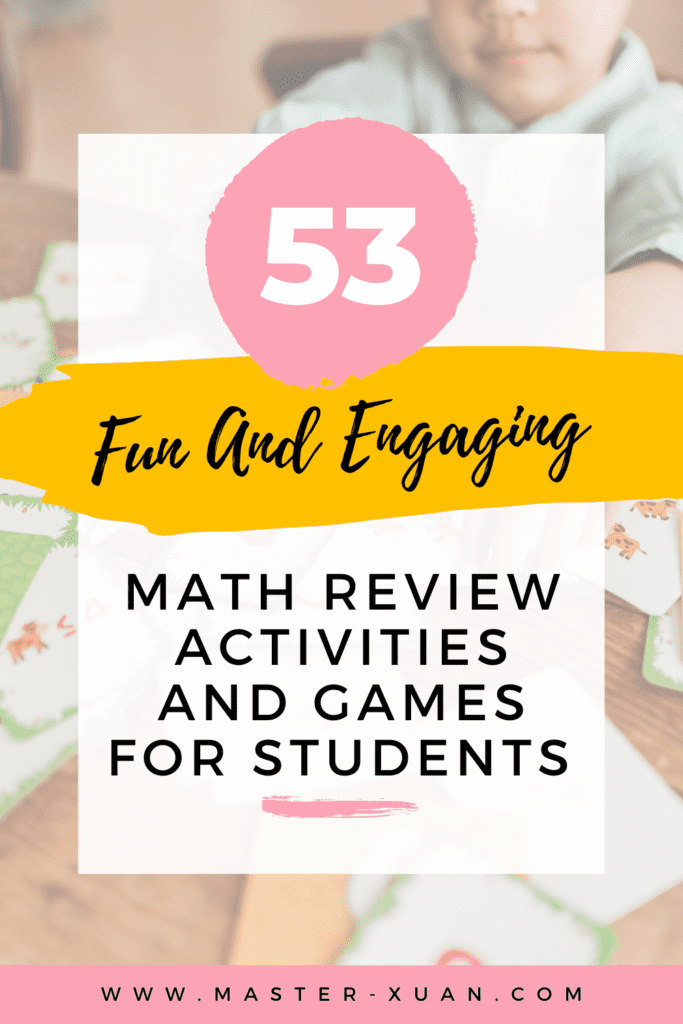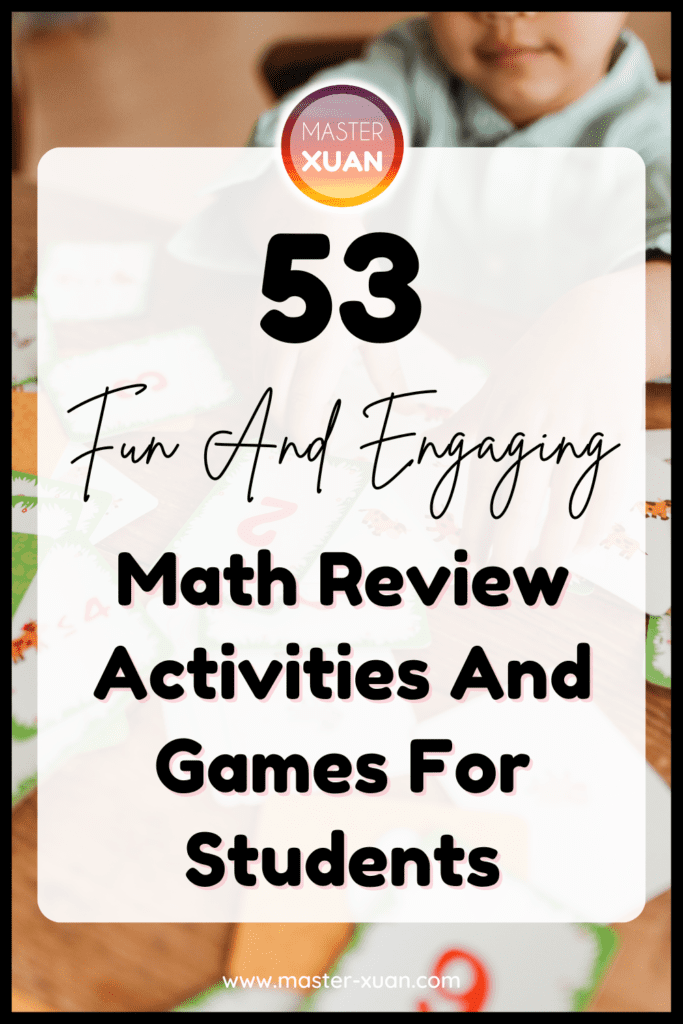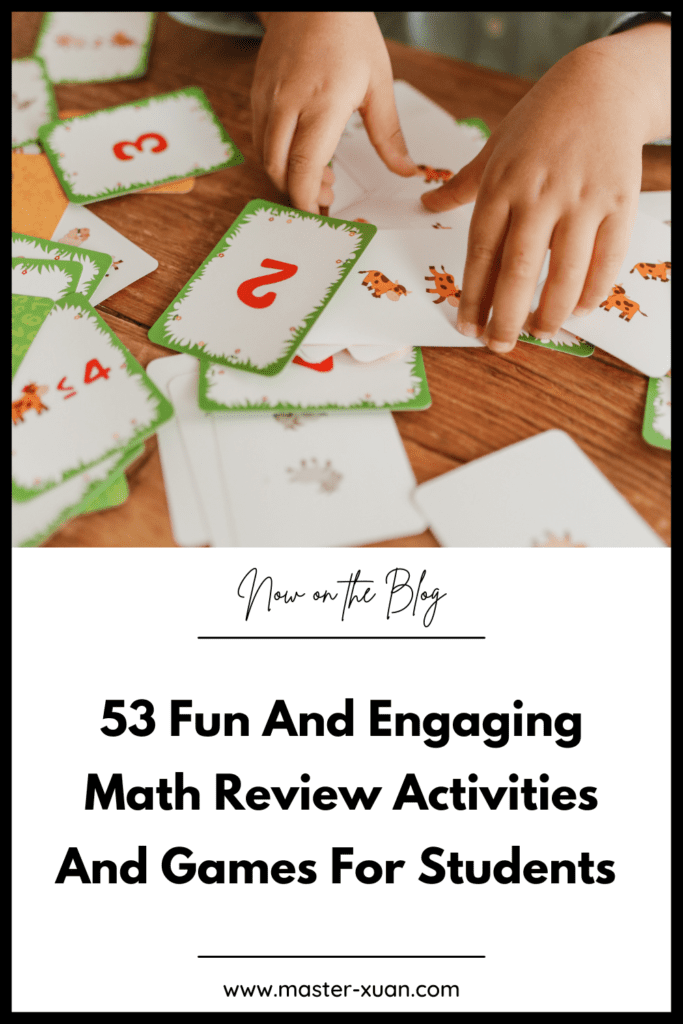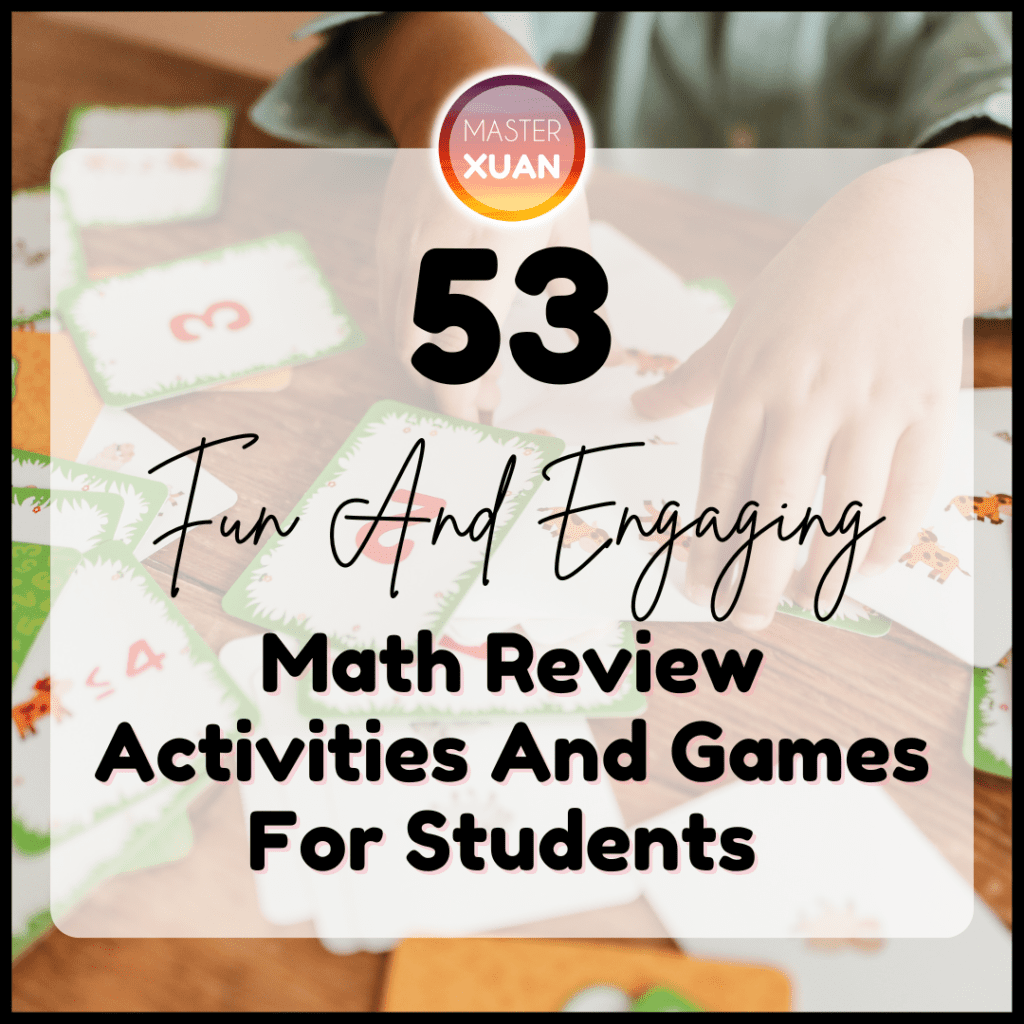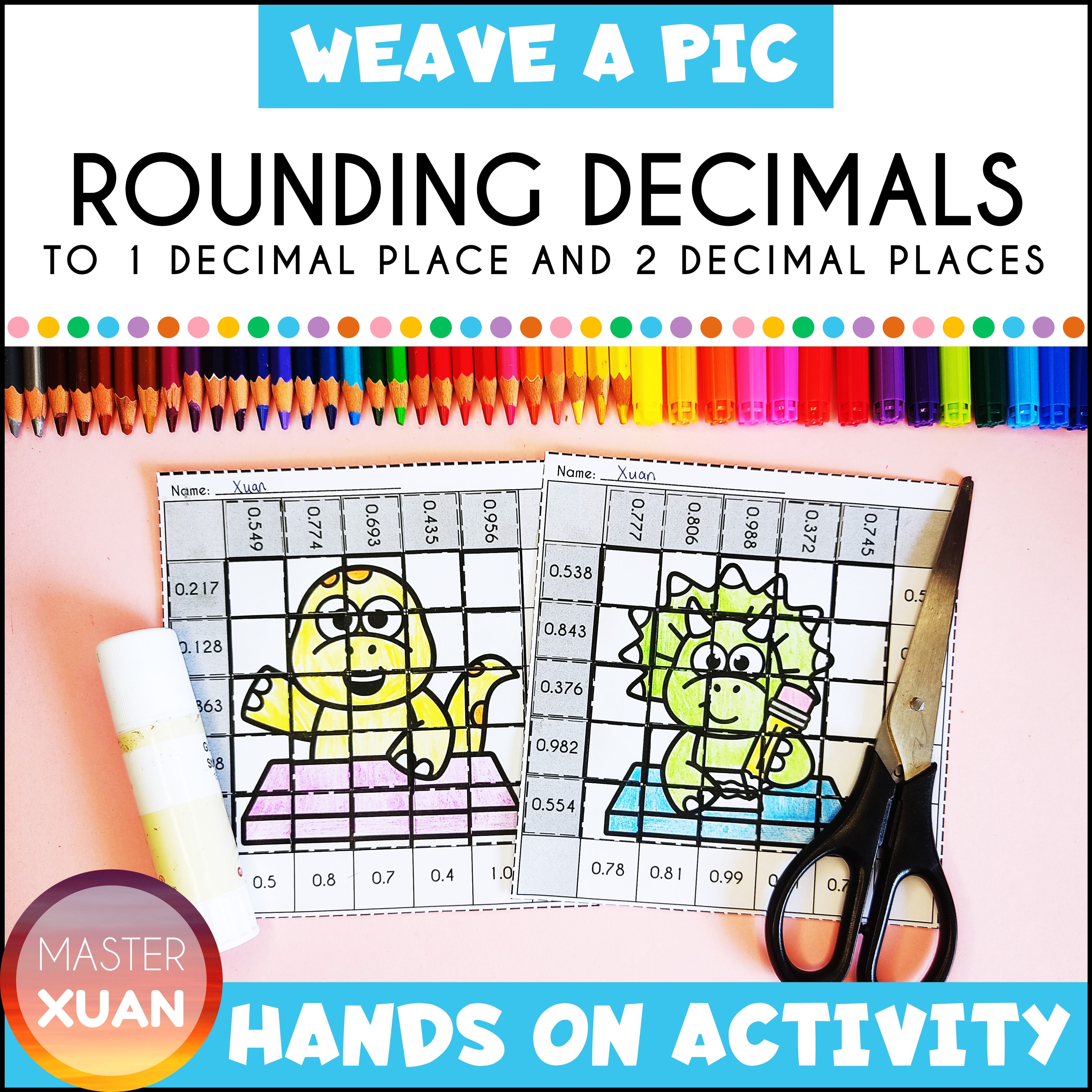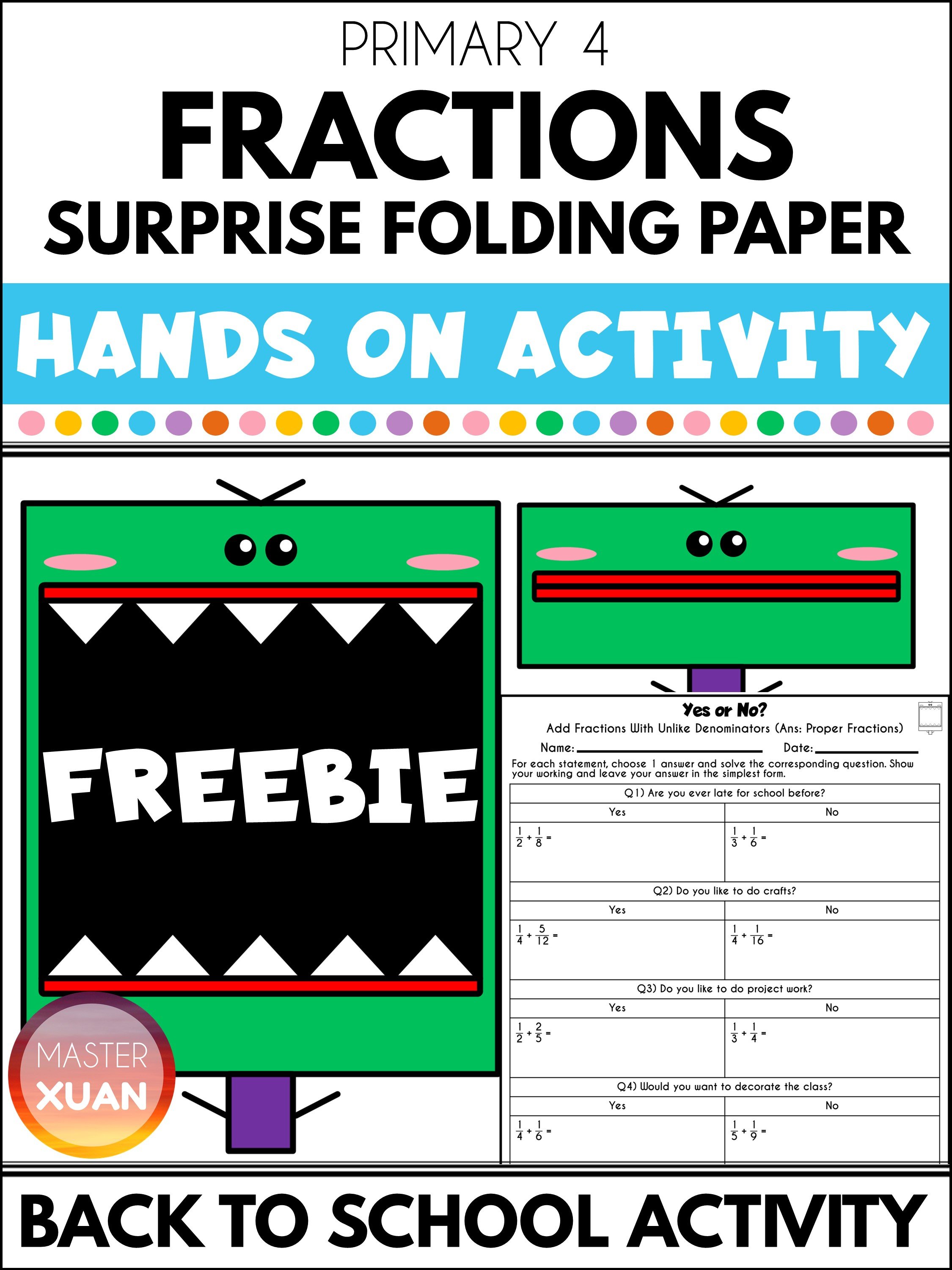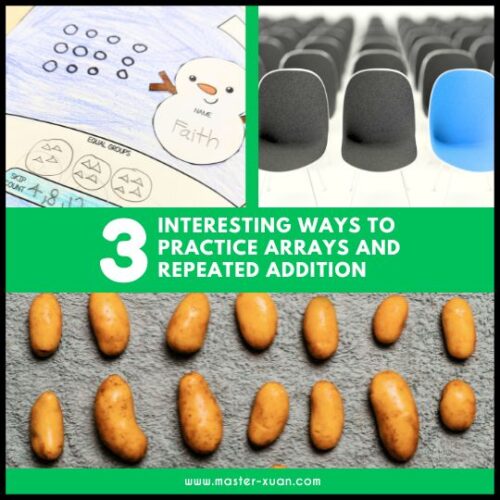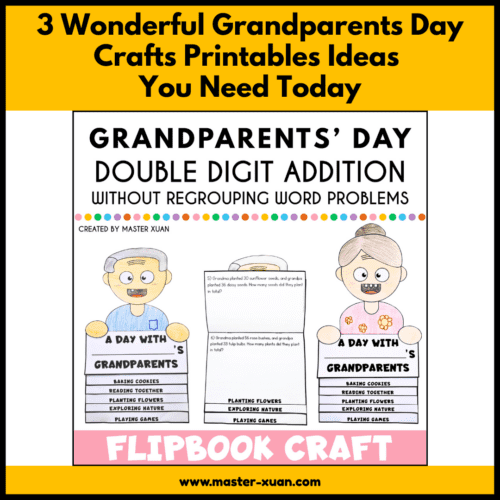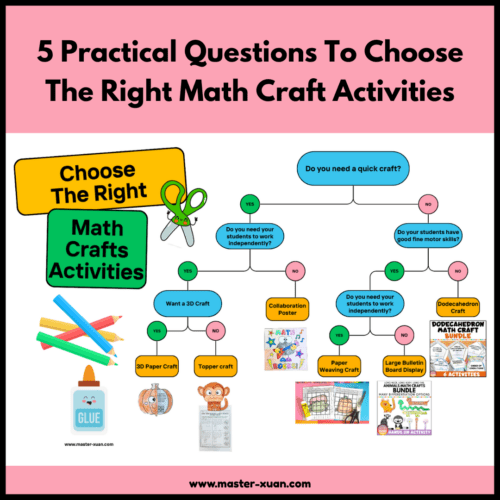Are you in need of some math review activities after your students learned the math concepts? Do you want to know the fun way to solve math problems? Then you need to read this blog post for more ideas!
I break down the math activities and fun math review games into a list of 53. Plus, I also provide some educational resources that will save you time and effort.
So get inspired and use them!
It is very important that students are constantly revising what they have learned. This is so that they will master the skill and retain the knowledge for a longer period of time.
You can choose to revise a particular topic or a few topics in one go.
To make this revision enjoyable, you will need these fun math review activities!
53 Math Review Activities
I categorize the 53 activities and games into 6 big categories.
- 53 Math Review Activities
- Online Math Review Activities
- 1) Jeopardy-style Math Gameshow
- 2) Math Quiz Show Game
- 3) Quiz Gameshow (Treasure Chest Gameplay)
- 4) Online Maze
- 5) Online Board Games
- 6) Grid Logic Puzzles
- 7) Digital Escape Room
- 8) Online Treasure Hunt
- 9) Online Jigsaw Puzzle
- 10) Spot The Same
- 11) Mystery Facts
- 12) Digital Online Task Cards
- 13) Interactive Game Online: Blooket
- Fun Printables Worksheets As Math Review Activities
- Printable Fun Math Games as Math Review Activities
- Card Games
- Hands-On Activities
- Other Math Review Activities & Games
- Final Thoughts
Online Math Review Activities
1) Jeopardy-style Math Gameshow
Players: 1 – whole class
As mentioned in 3 Types Of Math Gameshow Every Students Love & Rave About, I created 3 different versions of the Quiz Game Show hosted in Boom Learning.
The first one is a Jeopardy-style Math Gameshow that allows contestants to choose the points and categories. Likewise In the math quiz show game, the concepts are written and points are stated.
Split your students into 4 groups. Students can choose the level of difficulty and the concept to answer. If they got it right, they got the points. If not, they don’t receive any points.
Other students or teams get to answer it and if they got it right, they will get the point.
Students also get to play the quiz by themselves, seeing how many points they can score.
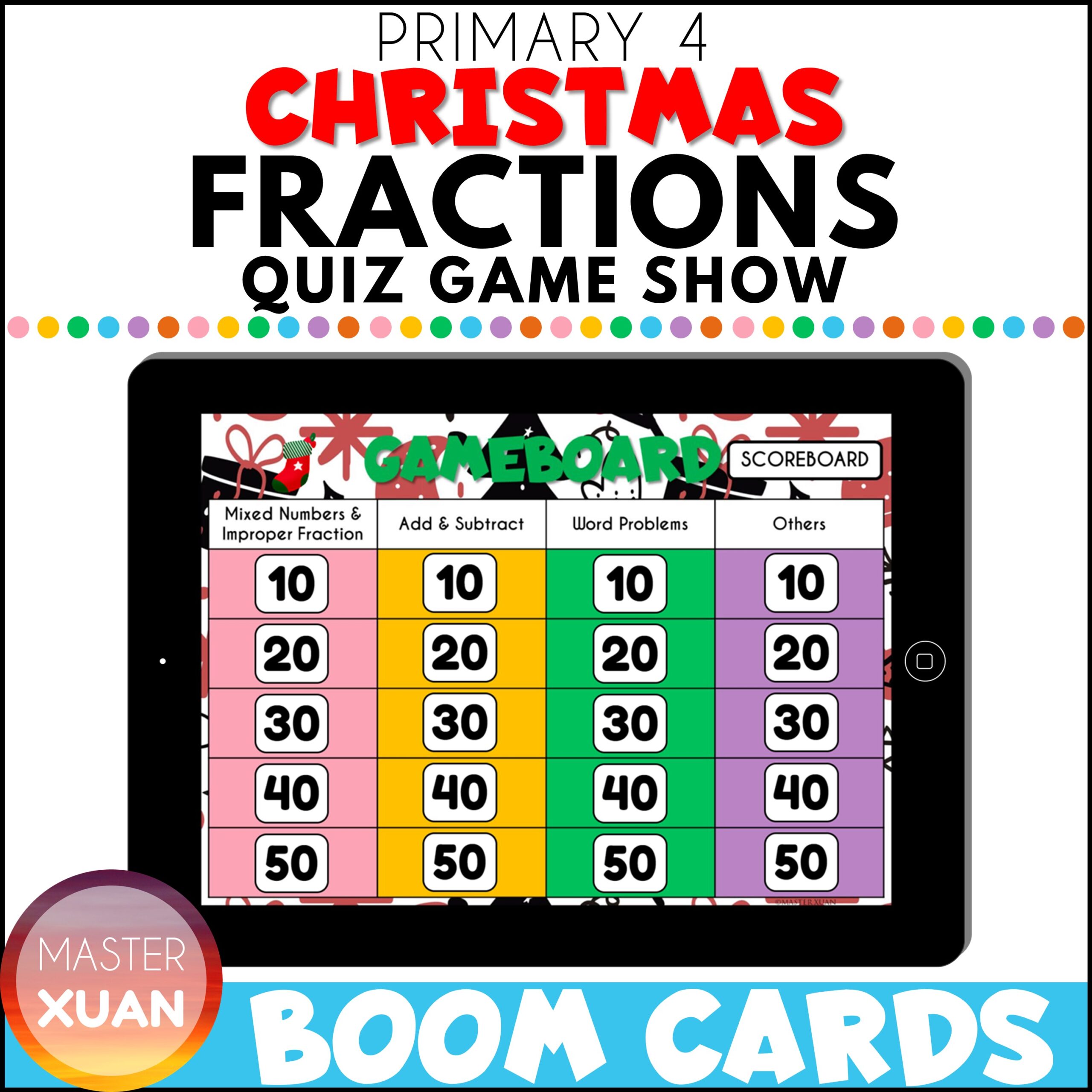
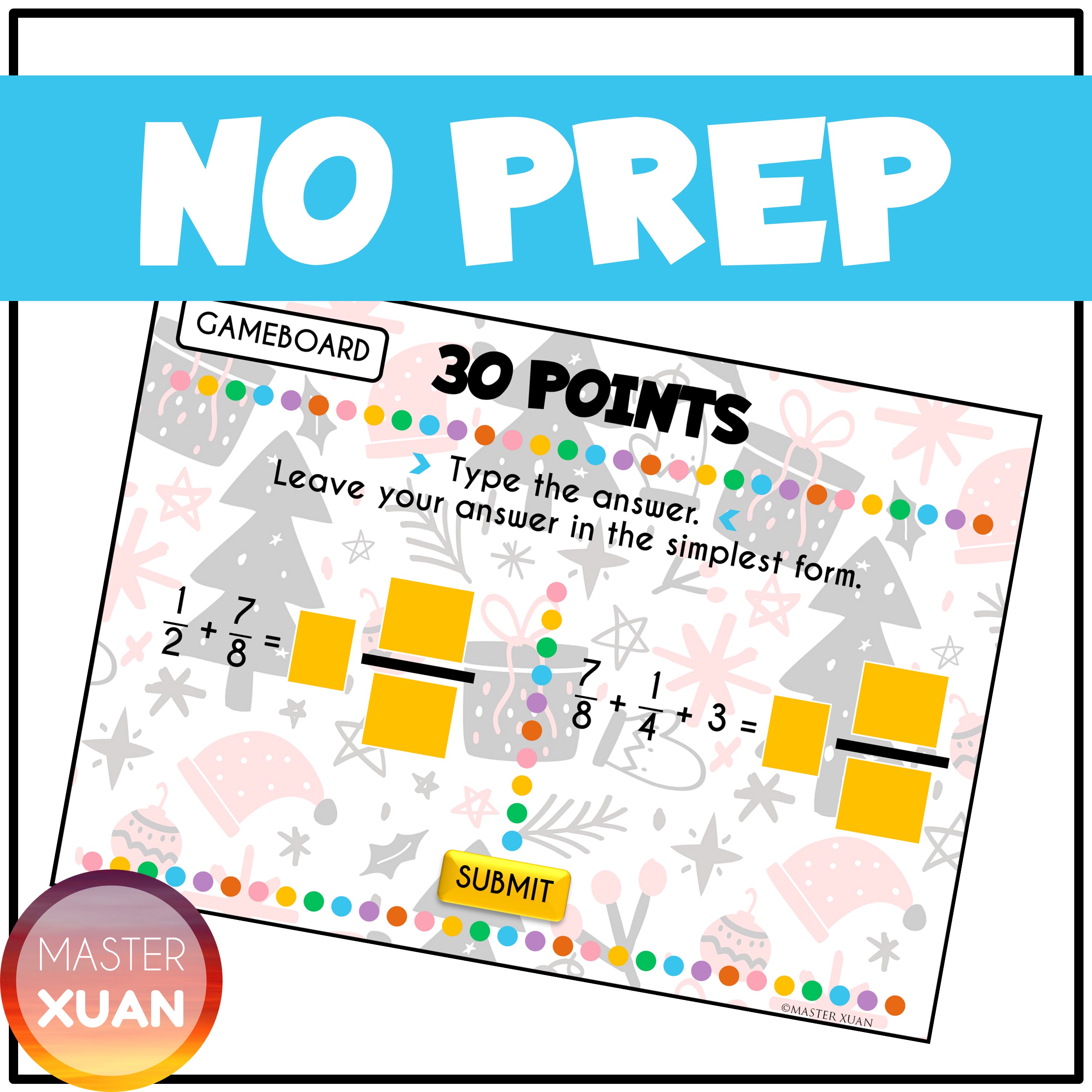
2) Math Quiz Show Game
Players: 1 – whole class
The 2nd type of gameshow works similarly to the first, just that I removed the categories and an element of luck is required. Students will only know the points allocated to the problems after they chose a number.
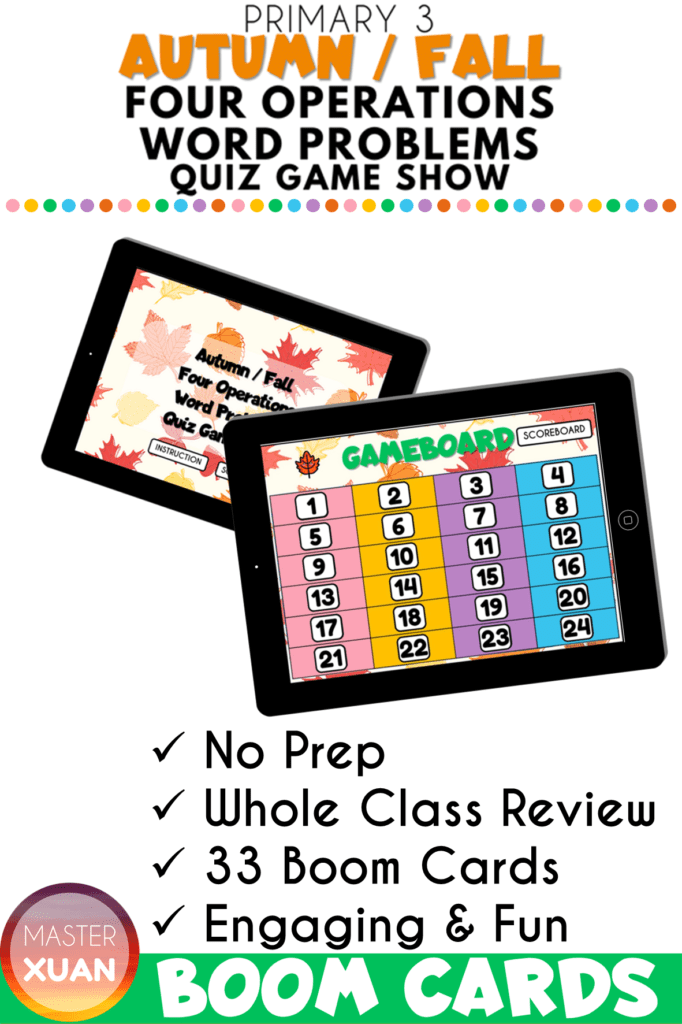
3) Quiz Gameshow (Treasure Chest Gameplay)
Players: 1 – whole class
The 3rd type of gameplay adds even more interaction between players making. Students can gain points, lose points, and even swap points.
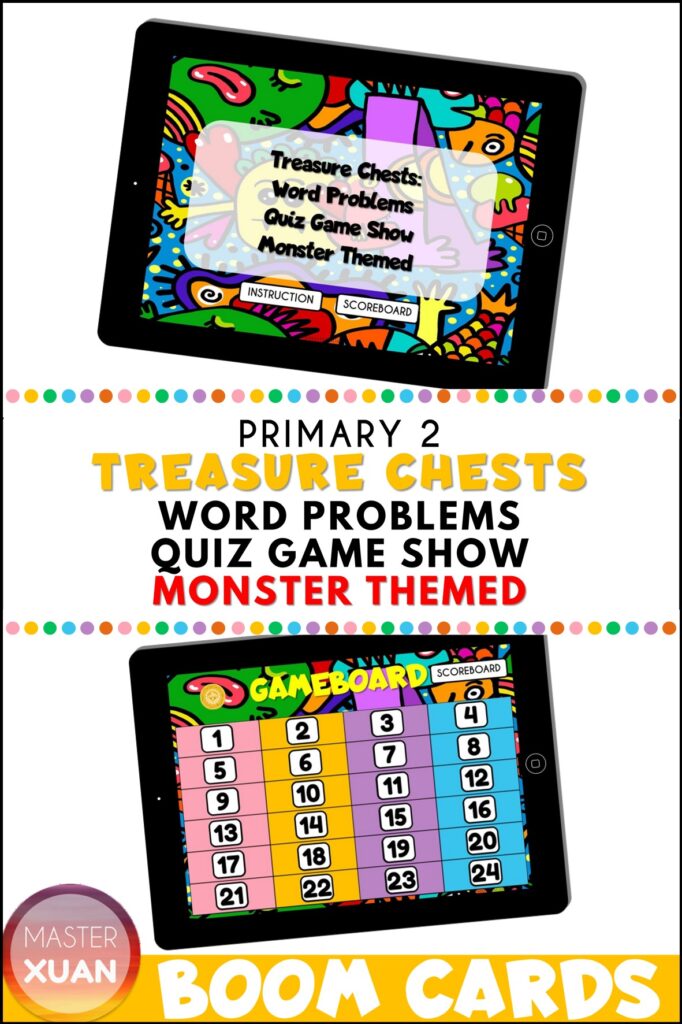
4) Online Maze
Players: 1
Students just need to tap on the boxes to waddle through the correct answers to reach the end.
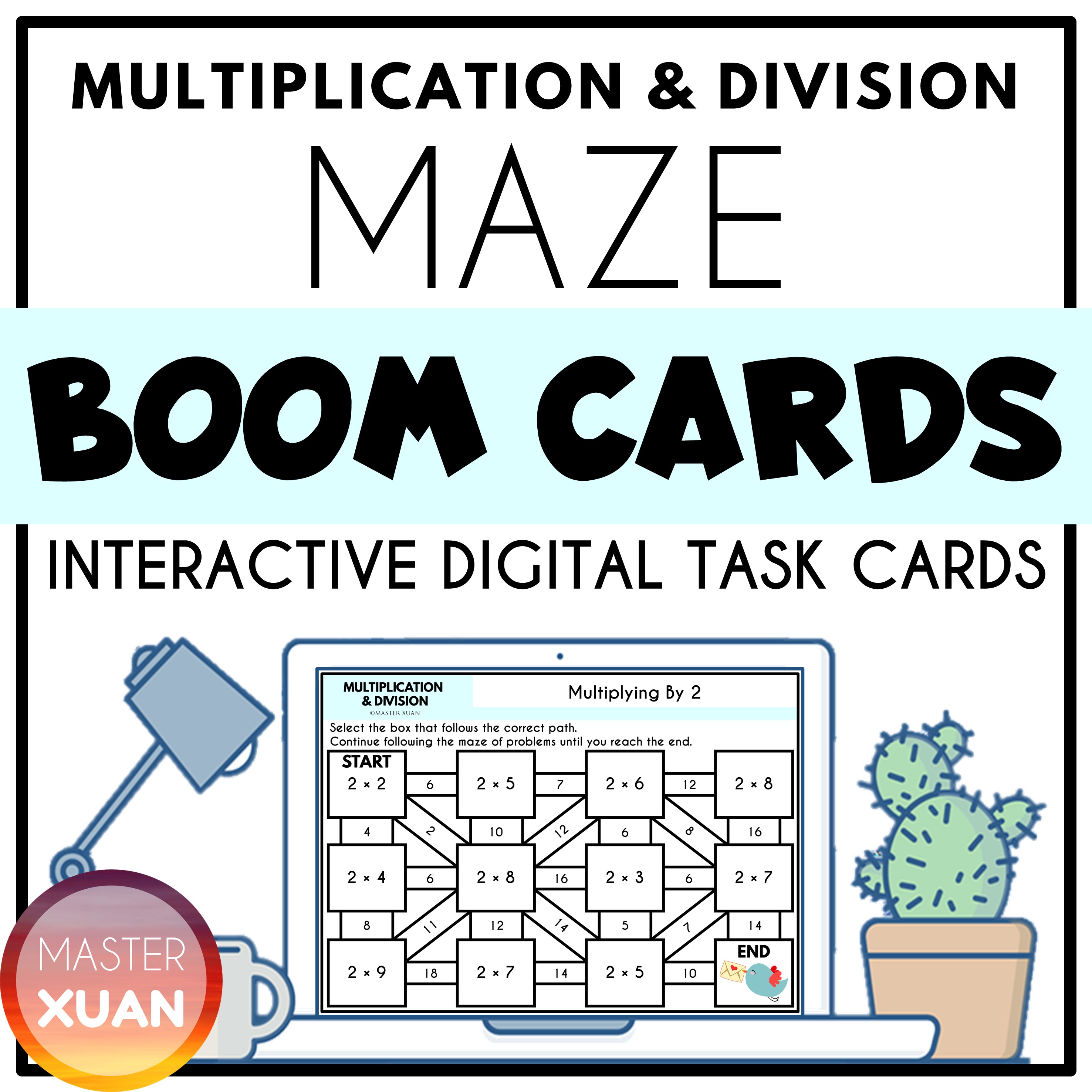
If you have a boom account, you can create your very own maze too. So instead of reviewing 1 math skill only, you can review as many math skills as you like.
5) Online Board Games
Players: 2 – 4
This is great if you need to play online games with students. Now you don’t need to worry about lost pieces and dice.
There are many types of online board games. The one that I have allows students to practice math facts.
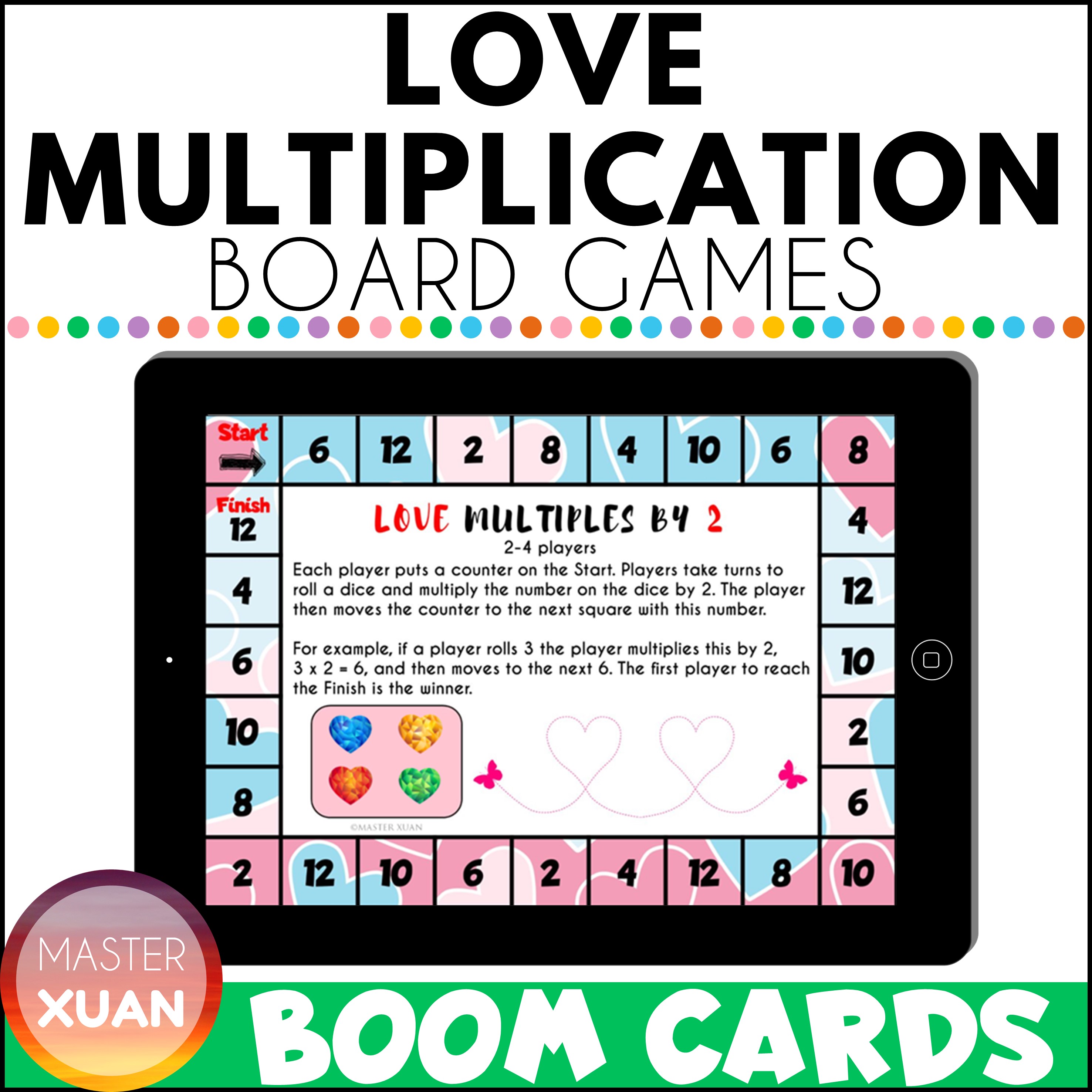
6) Grid Logic Puzzles
Players: 1
Students need to solve questions and then make the correct pairing based on the clues.
This requires students to make use of logical and deductive reasoning.
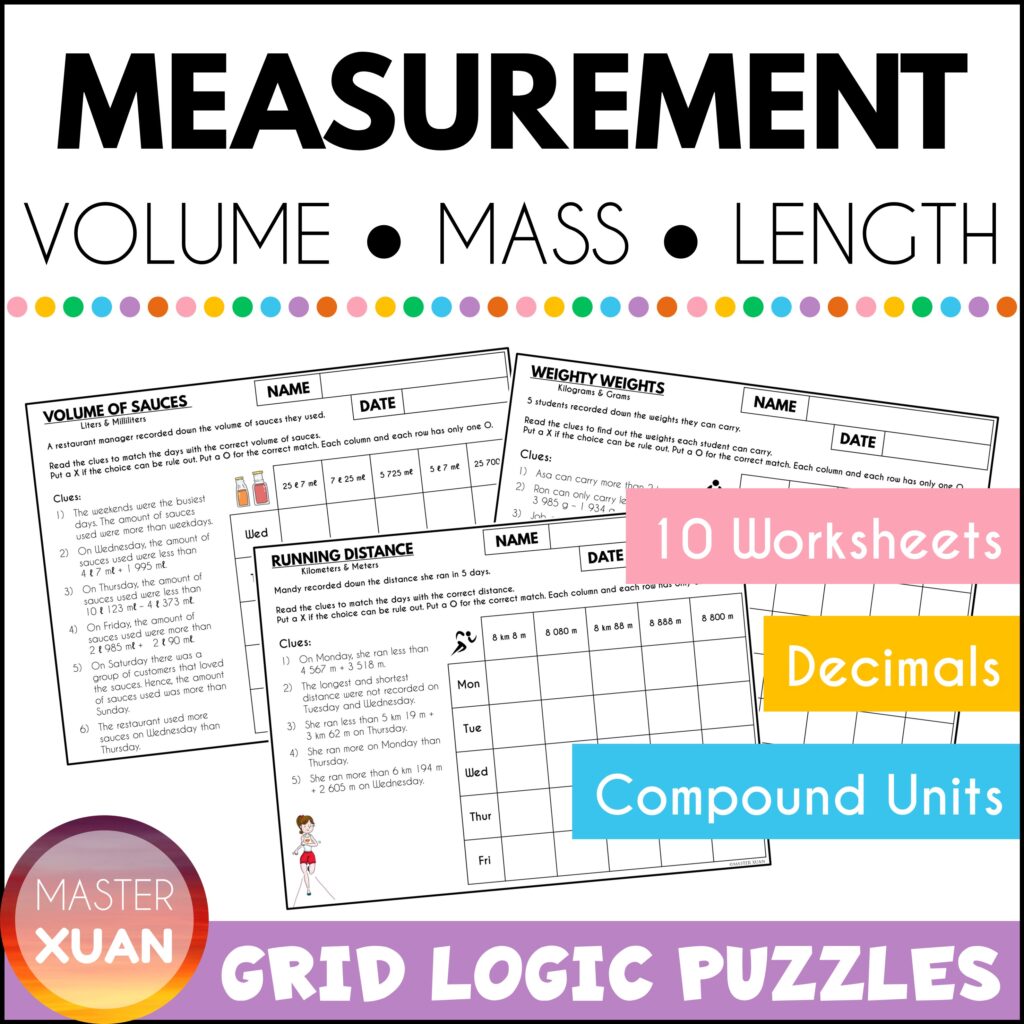
7) Digital Escape Room
Players: 1 – 2
Online escape rooms are no prep and self-checking. It saves you tons of time and removes the need for you to prepare locks and envelopes.
Often there are different puzzles that may review different math skills. With a variety of questions, this makes it a fun math review game!
Often I give students this resource to play independently, but you can pair students up so they can complete it together.
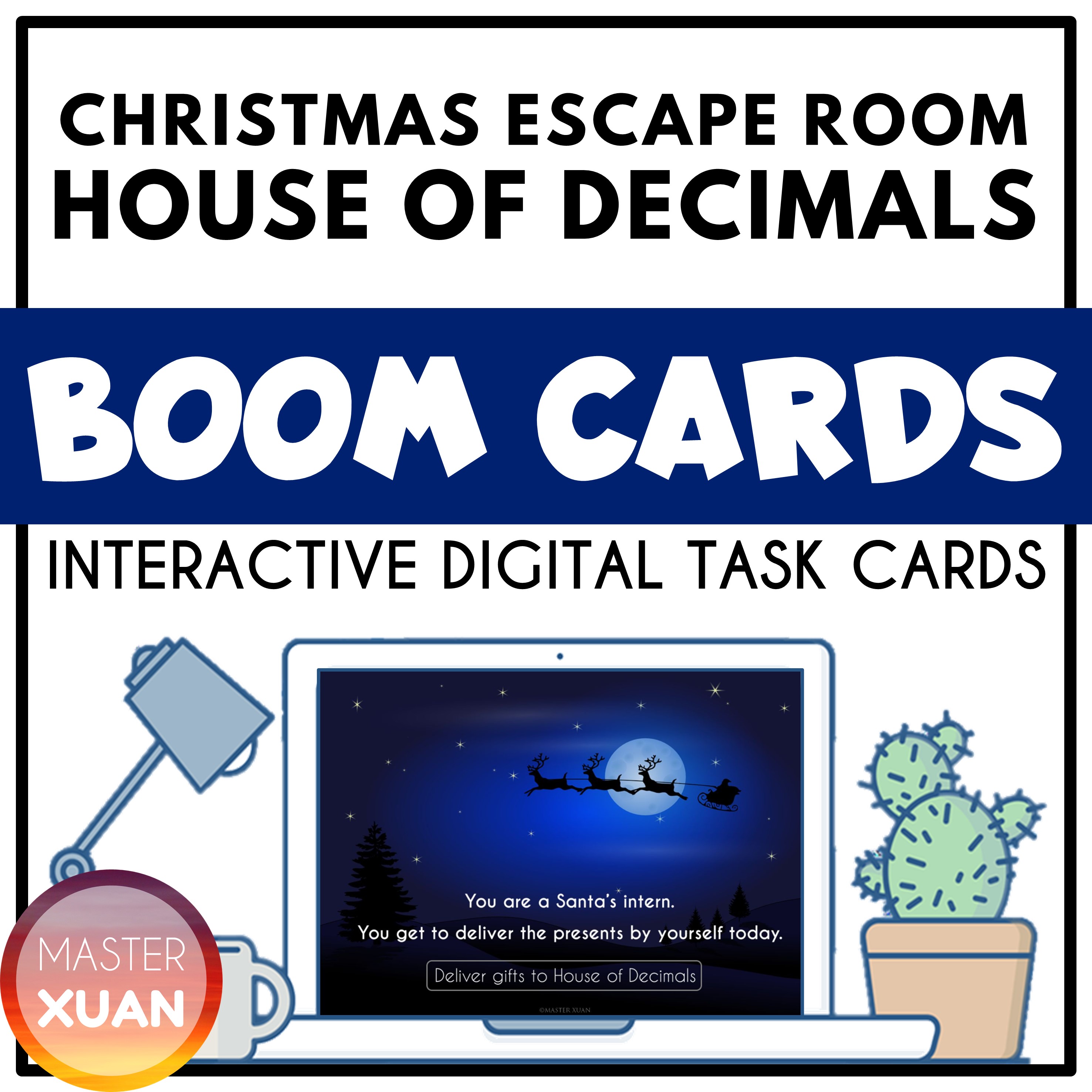
8) Online Treasure Hunt
Players: 1 – whole class
Online treasure hunt allows you to play and revise even while it is raining outside. Your students wouldn’t even need to get themselves wet and dirty. The best part, it’s no prep and self-checking which means you got more time to prepare a better lesson or enjoy life!
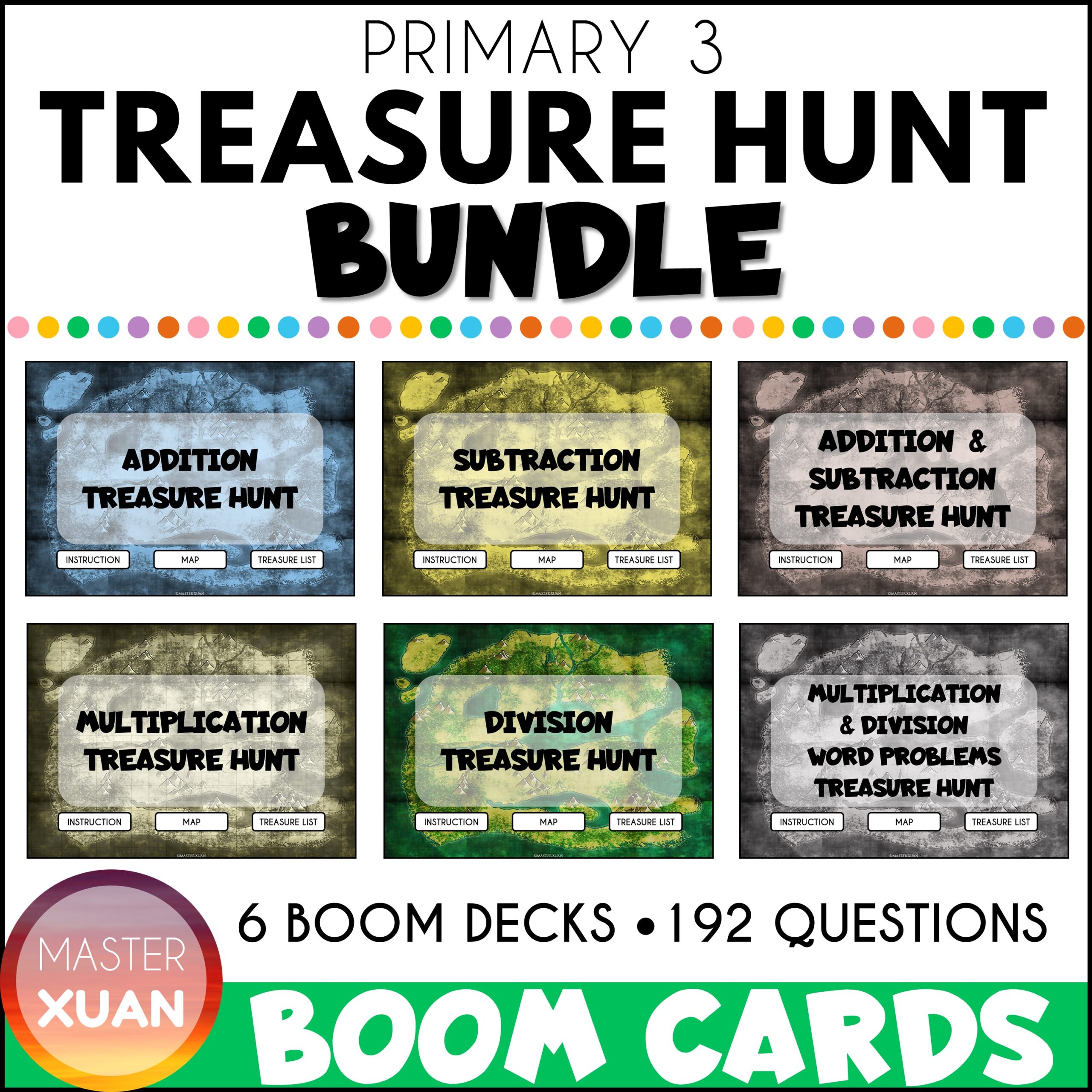
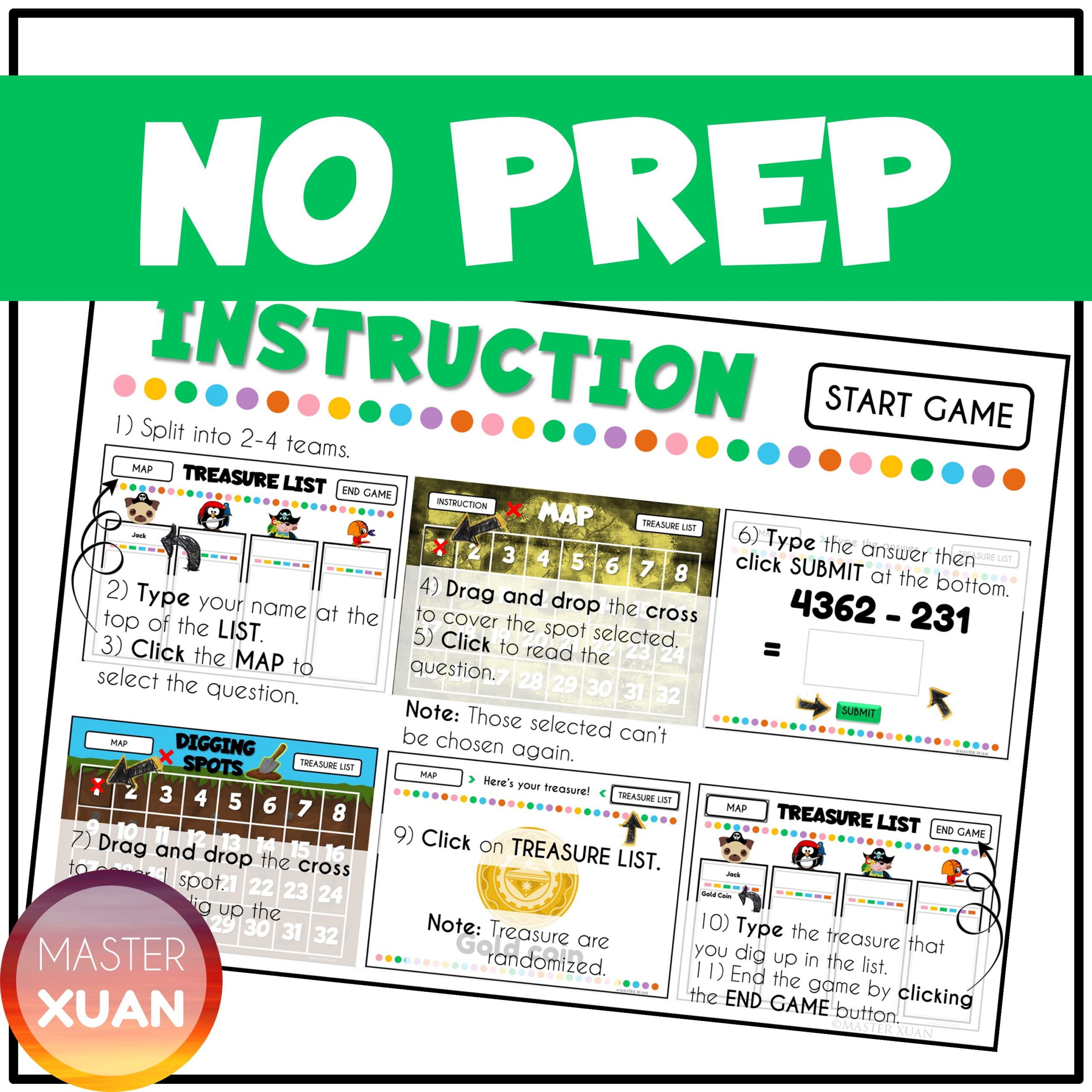
9) Online Jigsaw Puzzle
Players: 1
Solve the question and find the answer on another jigsaw piece on the corresponding side. Play it like how you will play a usual jigsaw puzzle.
The benefit of digital jigsaw puzzles is you never need to worry about missing pieces again!
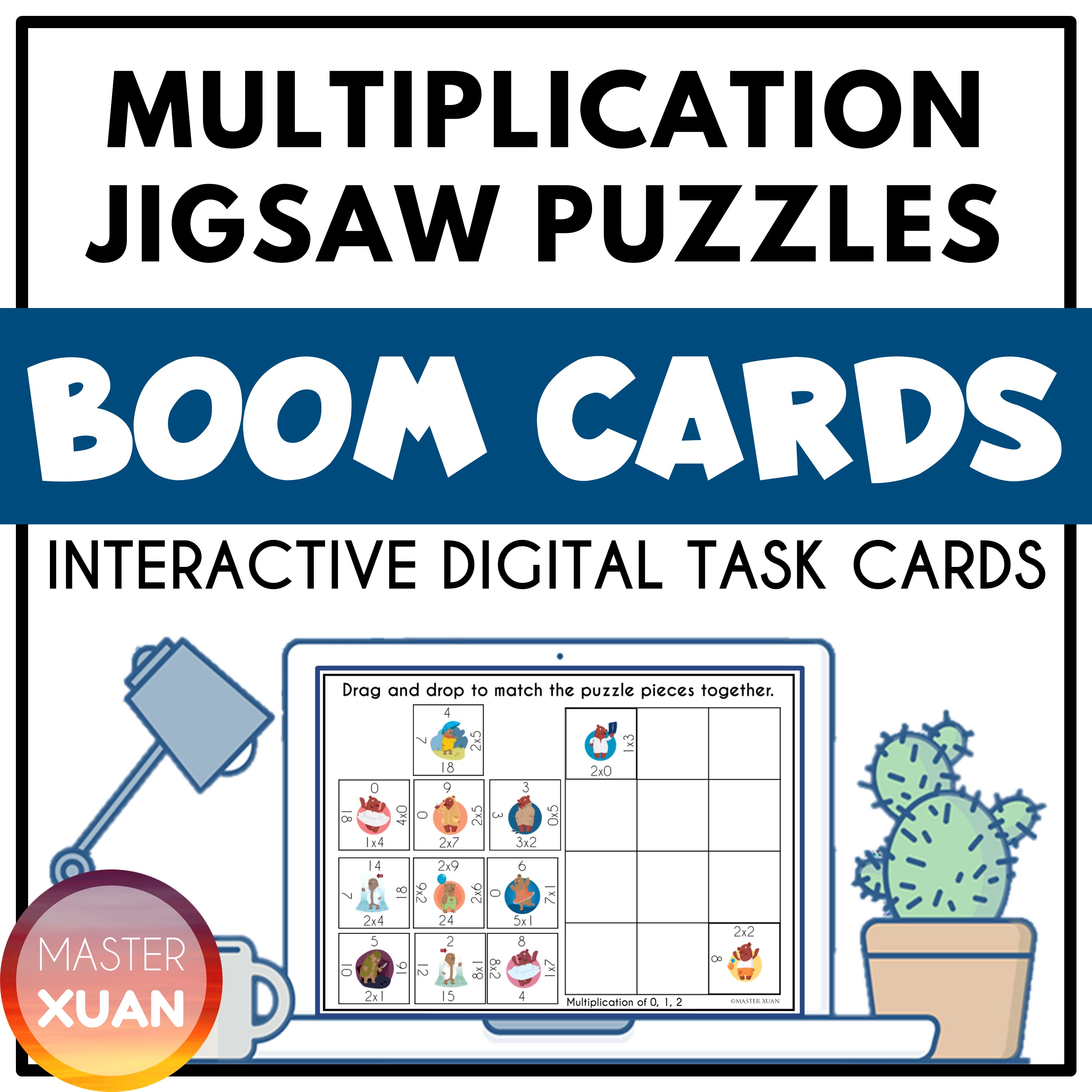
10) Spot The Same
Players: 1
Students need to answer the questions on 2 task cards before they get to play Spot The Same. It works like Spot the Difference, just that in this case 3 out of 4 images on the left are different. The goal is to choose the one that is exactly the same.
Students get to review math measurement questions and play with the same deck.
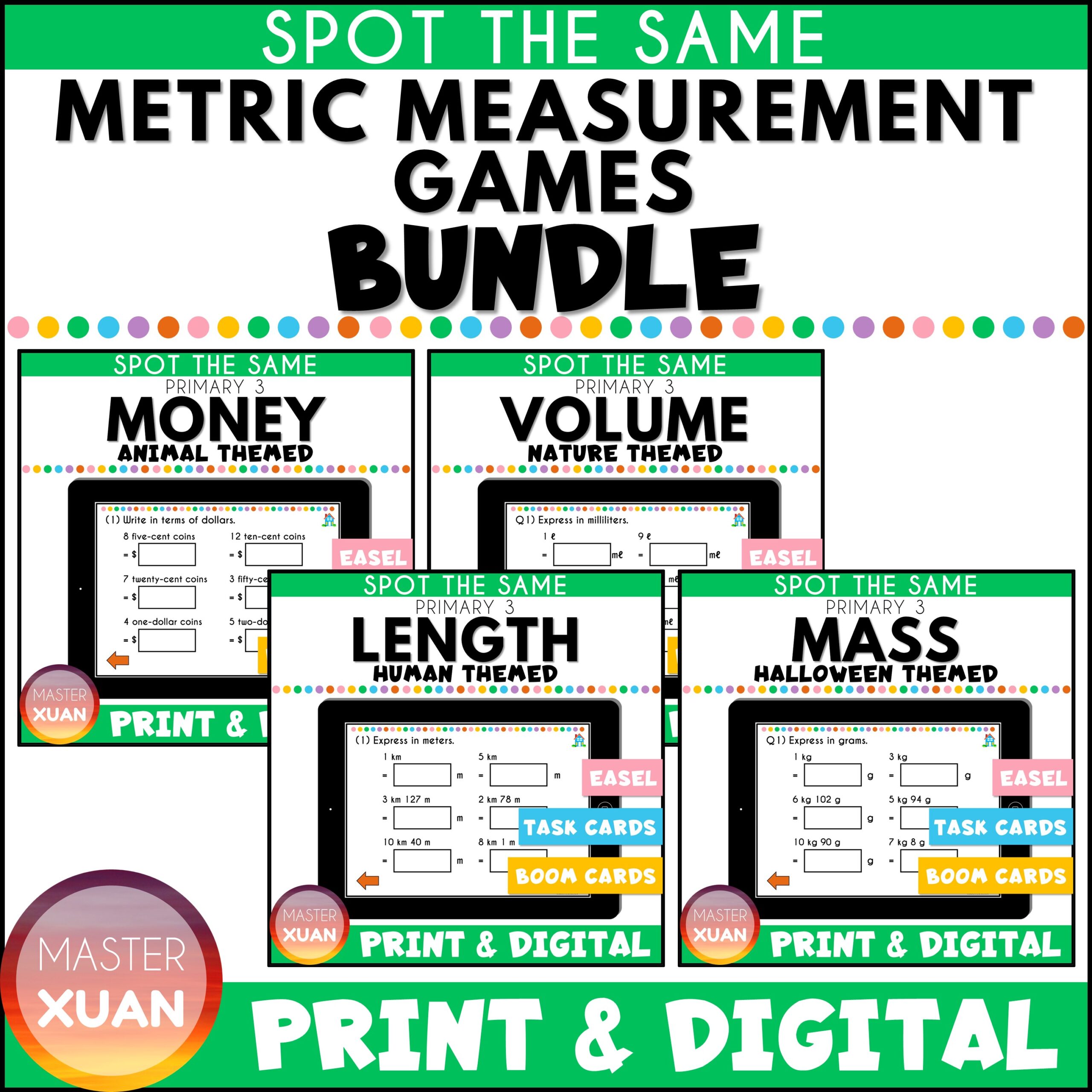

11) Mystery Facts
Players: 1
Students get to review long division and learn some facts! After doing a long division question, the answer will be part of the facts.
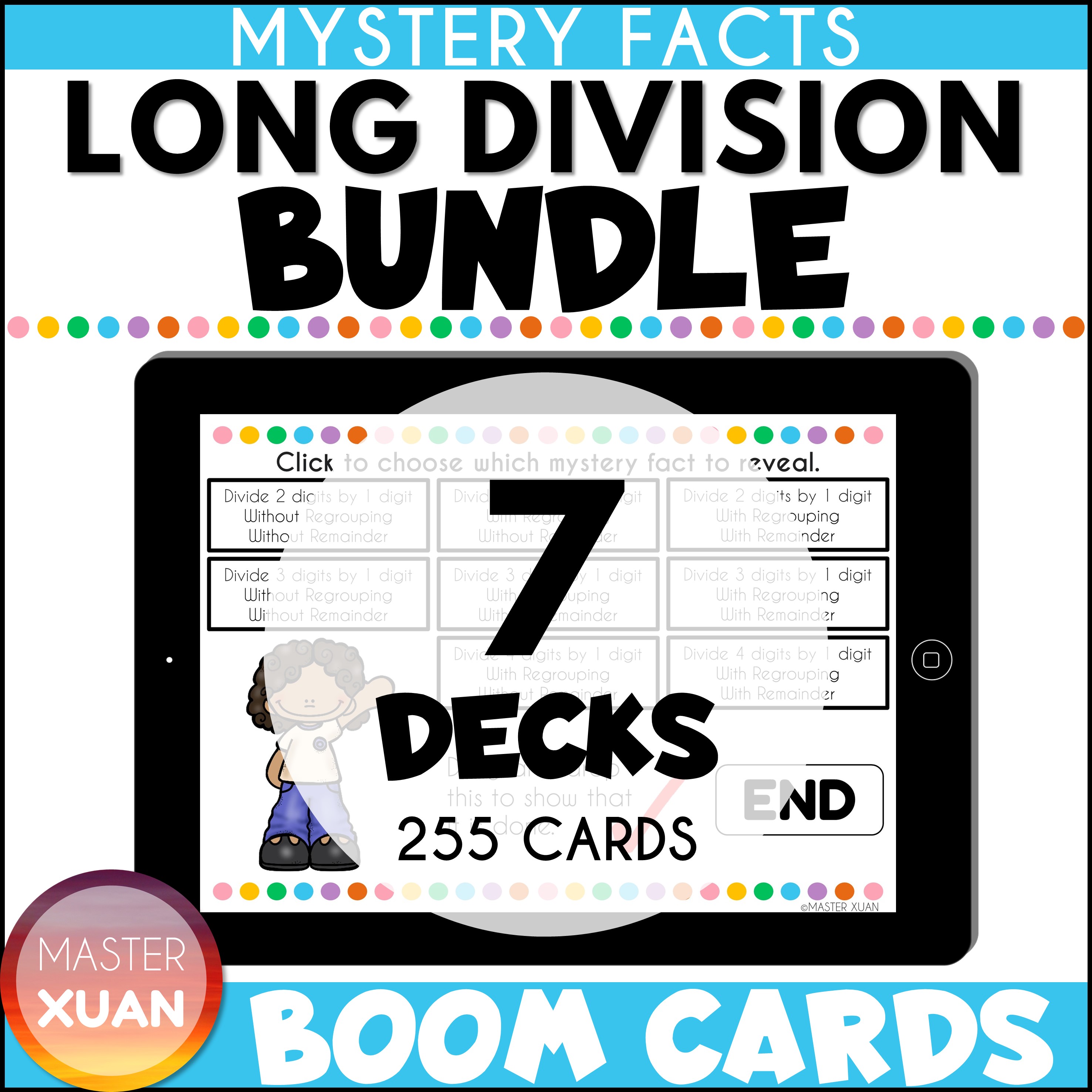
12) Digital Online Task Cards
Players: 1
Students’ eyes light up when they get to use tablets and laptops in class. Instead of the usual paper quiz or worksheets, give them an online interactive quiz instead. When the student answers correctly or gets it wrong, they will receive instant feedback which is great!
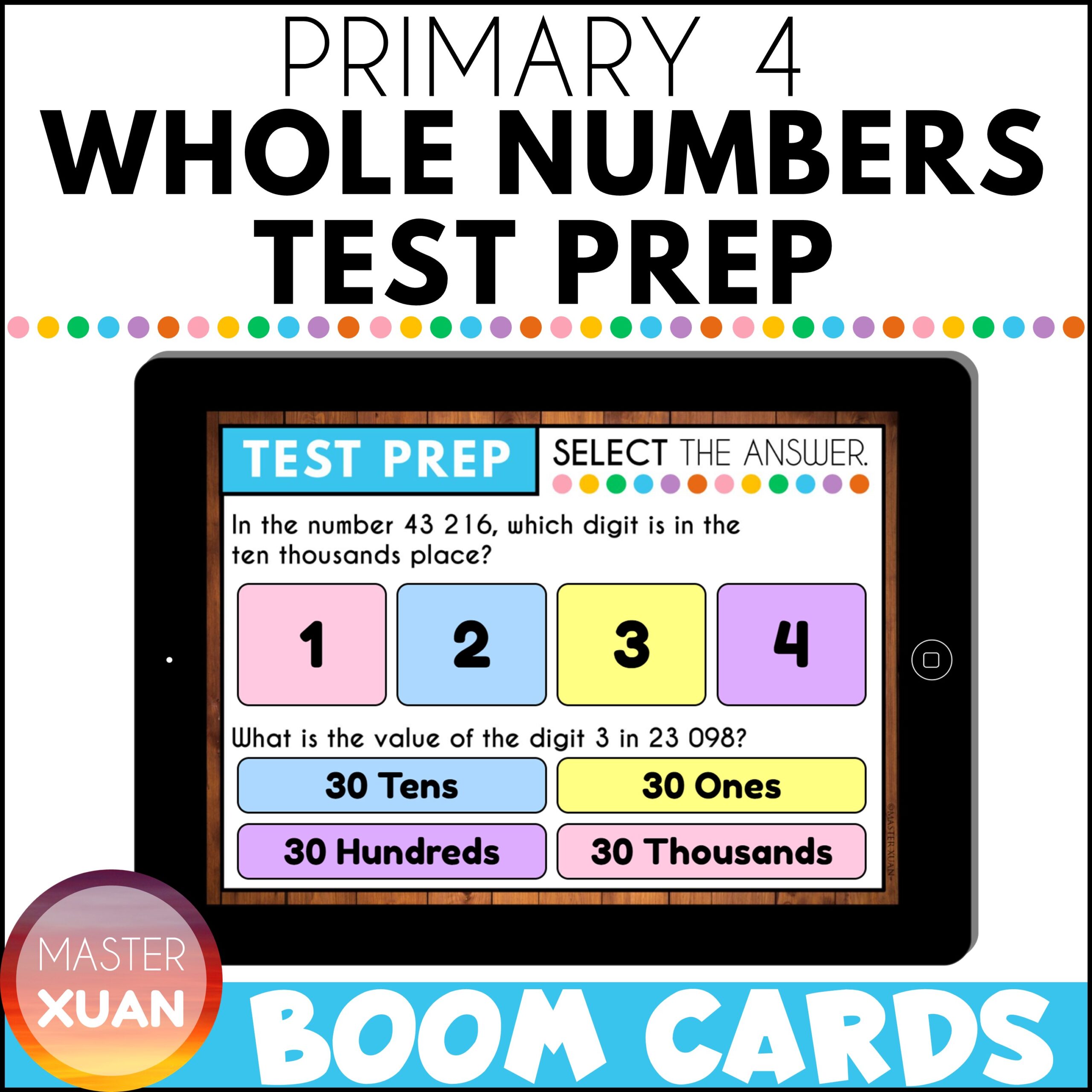
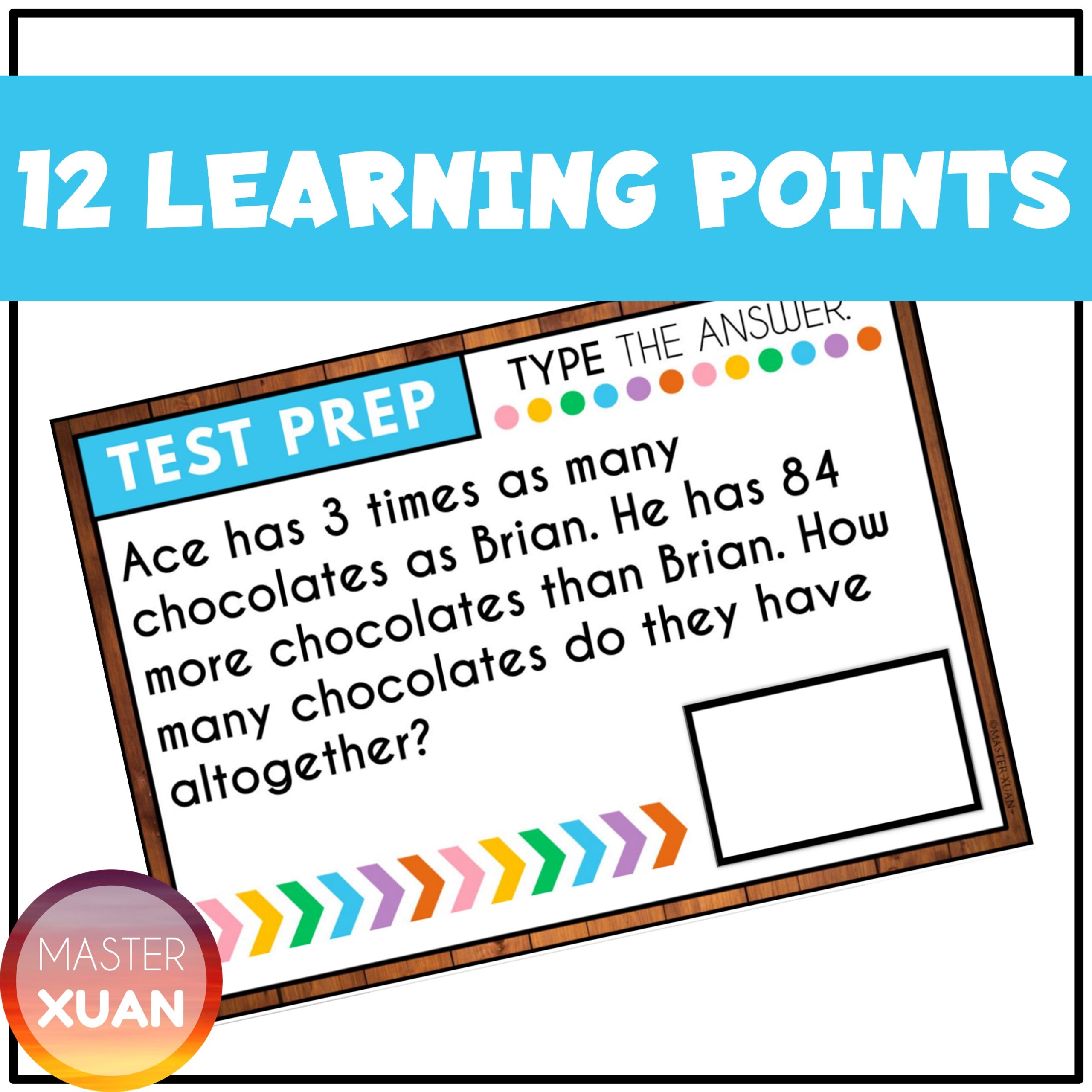
13) Interactive Game Online: Blooket
Players: 1 – whole class
There are many reviews available on Blooket that you can just select and use. Or to play safe, you can create your own questions and answers.
First, choose the set of questions you want your students to review.
Next, you get to choose the type of games your students play.
Then, set your settings like how long the game will last or what is the winning goal.
Finally, share the link and watch your students answer questions and play.
I like this website as it incorporates interactive video games with self-made questions. Students enjoyed it!
Fun Printables Worksheets As Math Review Activities
Just because they are in the form of worksheets doesn’t make these math review activities boring!
14) Color & Round Decimals
Players: 1
This is a FREE resource I found on TPT. Students will use the given spinner and create their unique numbers.
Students then need to solve questions involving place value and rounding off. Based on the answer, they will color the corresponding color.
15) Printable Escape Game
Players: 1 – whole class
There is a variety of printable escape games. Most of them reduce the fuss of hiding stuff and preparing locks, while some of them require more preparation from you to cut and paste.
Usually, the resource can be done independently, but if you want, you can split the class into small groups so that they can help each other as they answer the math questions.
Students get to decode 5 challenges and review Whole Numbers, Fractions, Decimals, Time, and Angles with this No Prep Halloween math escape room.
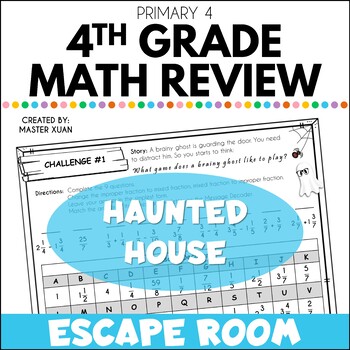
16) Mystery Puzzles
Players: 1
This series is great for reviewing as each set has different types of questions that students need to master.
Furthermore, to make it more interesting, students get a correct clue when they solve the question correctly. In the end, they will be able to eliminate the wrong choices and solve the mystery.
The rigorous practice is great for teachers who want lots of practice with a dose of fun.
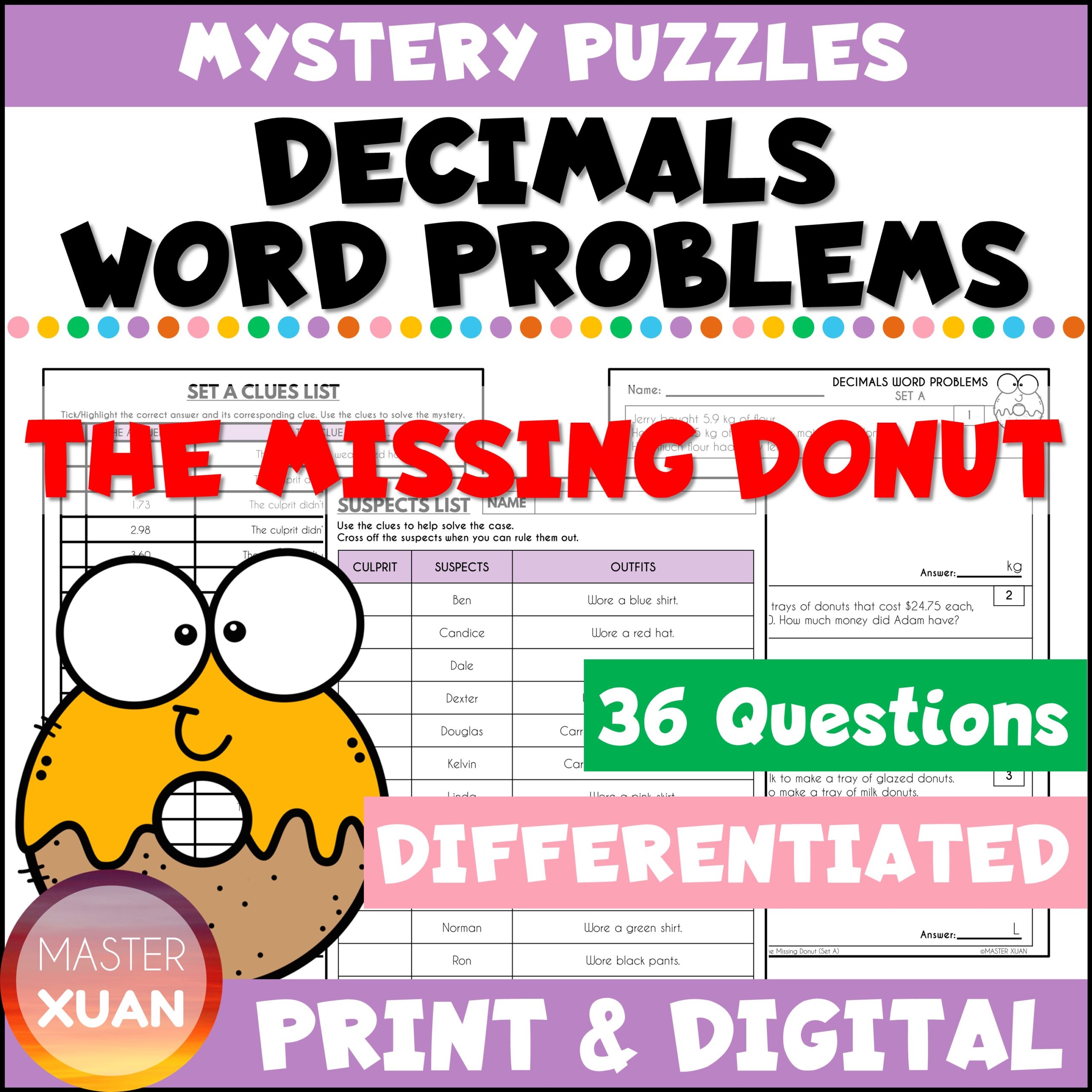
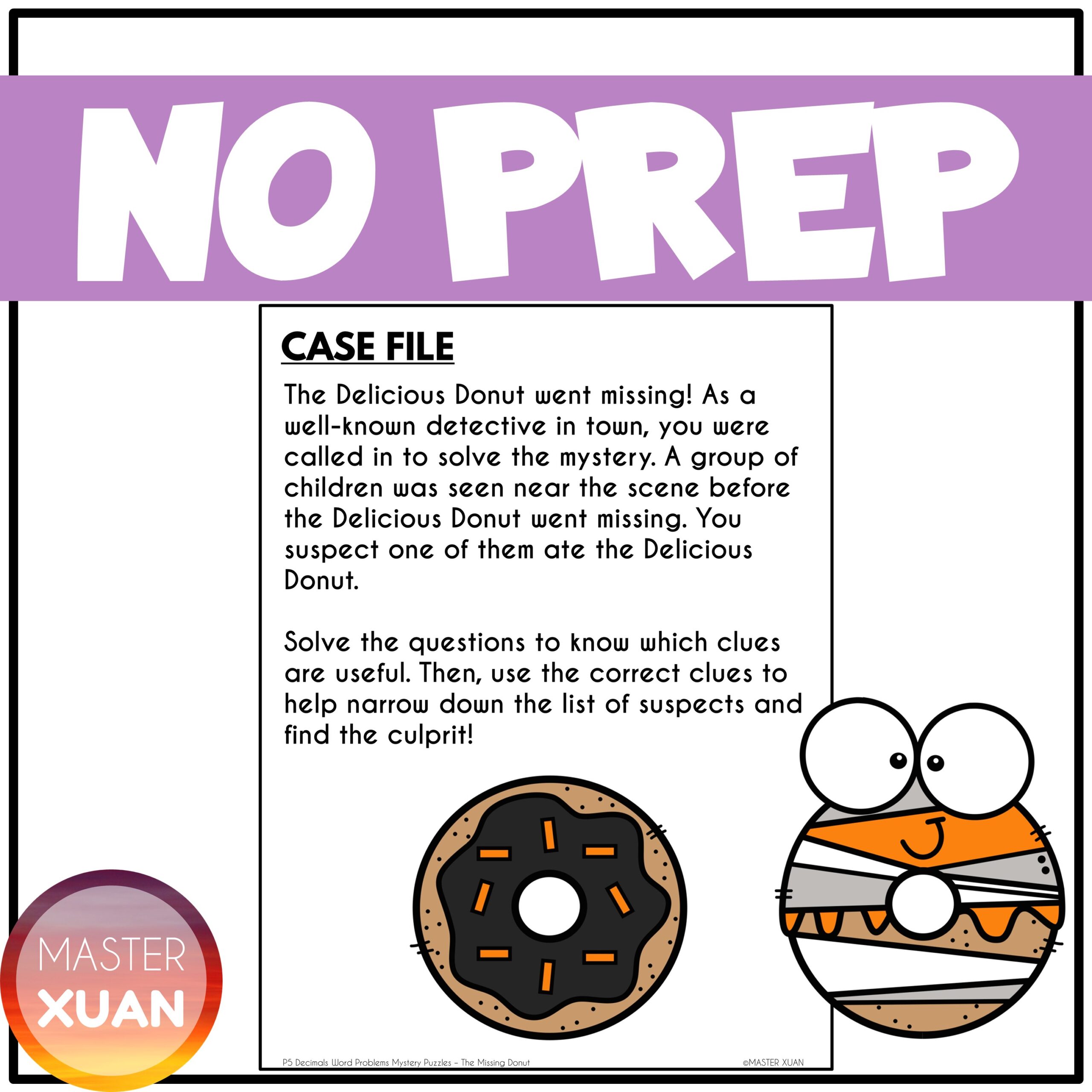
Printable Fun Math Games as Math Review Activities
One of the students’ favorite ways to review math is to play games, even when they become older kids or even high school students.
In addition, most of them just require you to print and do. What a time-saver!
Here is a list of games that you can have Math Fun with.
17) Printable Game board
Players: 2 – 4
You can create your own printable gameboard. There are many types of gameboard templates available on TPT for free. Just download one and add your own personalized touch.
Ensure that there are boxes indicating that students need to answer questions when they land on them.
Prepare a set of questions that you want your students to review. You can write them on index cards or print them and then cut them into smaller task cards size. Ready some counters and dice and you are set to go.
But if you want to save some time, buy ready-made game boards. This No Prep game board has the question written on it so you don’t have to cut extra cards.
When students land on the box with questions, they will be able to jump to the answer. If they land on the answer, they will need to jump backward instead.
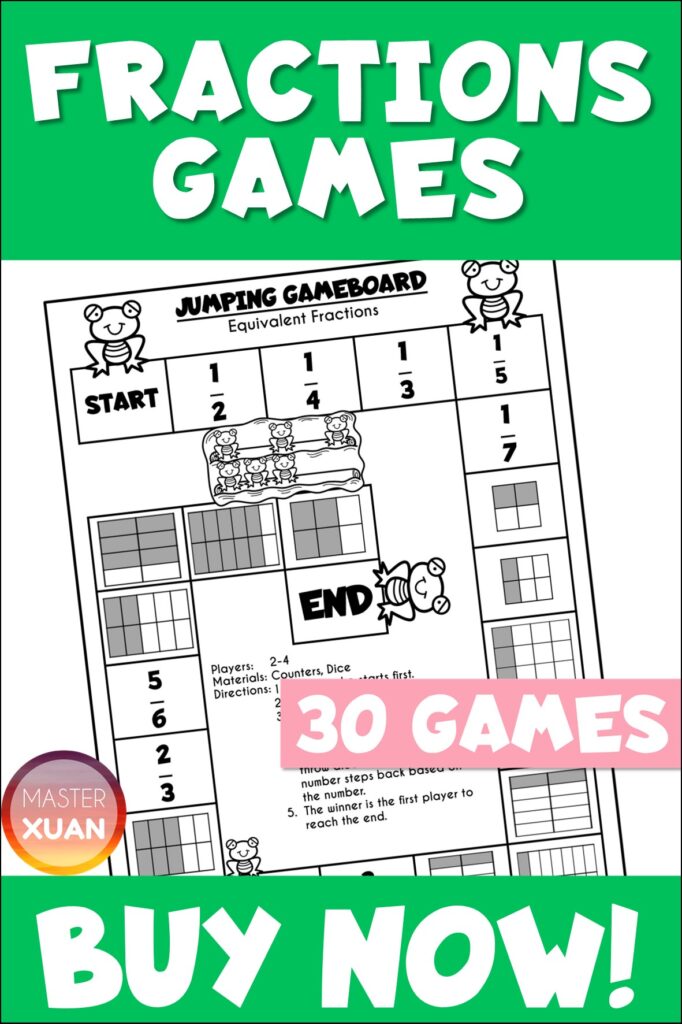
18) Bump
Players: 2
This gameplay usually means a student can bump off another student’s place when the condition meets.
Many of the fun fractions games mentioned below can be found in this resource.
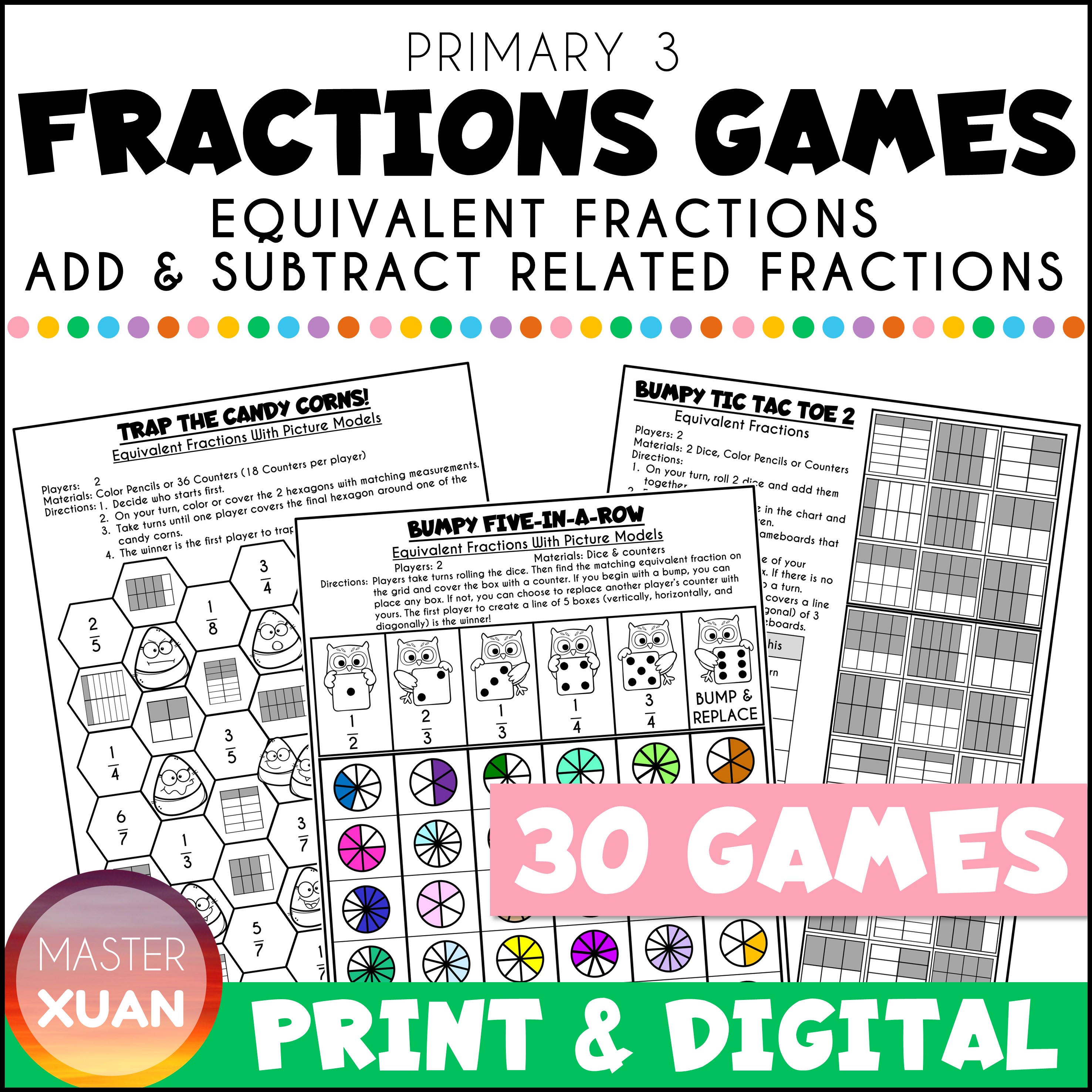
19) Math Tic Tac Toe
Players: 2
This classic game is so much fun.
- Students will take turns rolling the dice to select the question to answer.
- Then decide where to place the counter. Usually, there will be 2-3 of the same answer on different boards.
- When one student succeeds in connecting 3 counters to make a line vertically, horizontally, or diagonally, the student wins.
With an element of luck, this tic-tac-toe is more interesting!
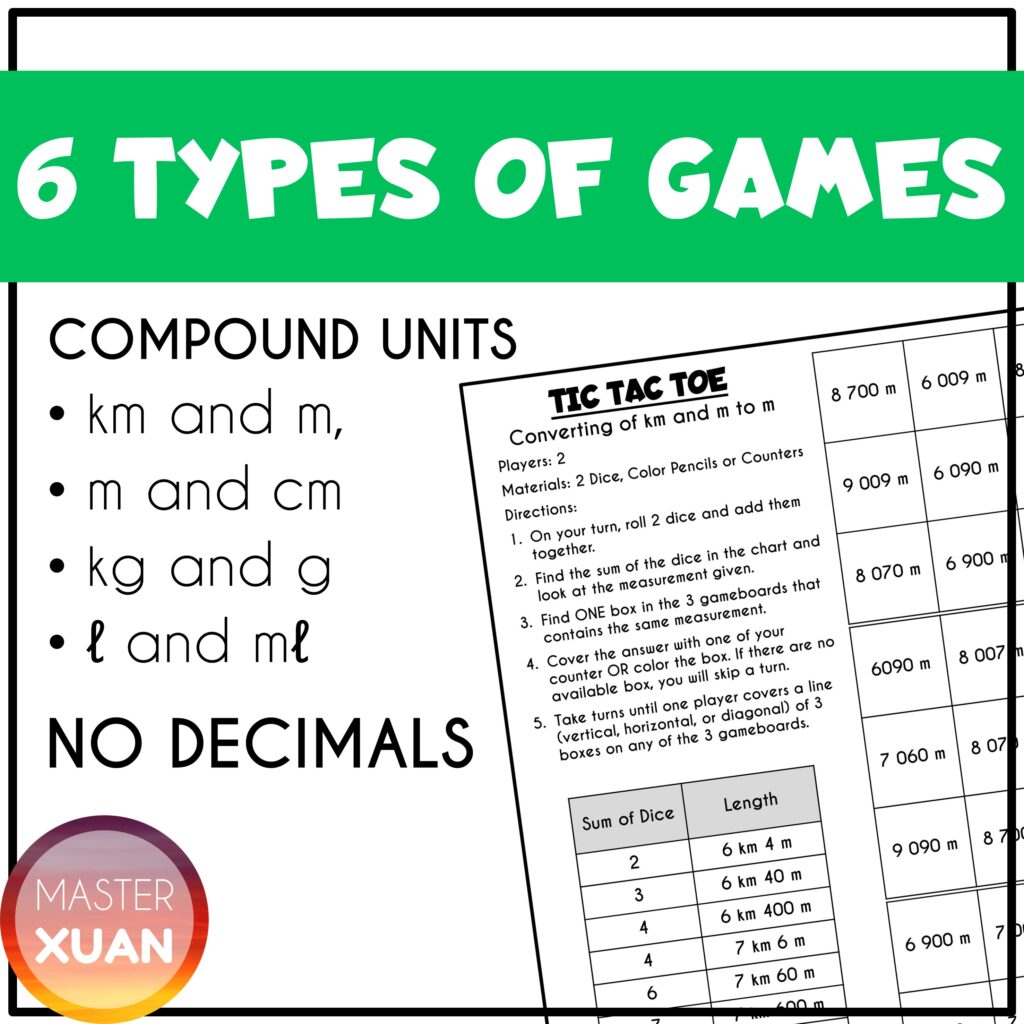
20) Bumpy Tic Tac Toe
Players: 2
The gameplay is similar to the usual tic tac toe but I add a fun twist to it with the additional possibility of bumping off the opponent’s counter and replacing it with theirs!
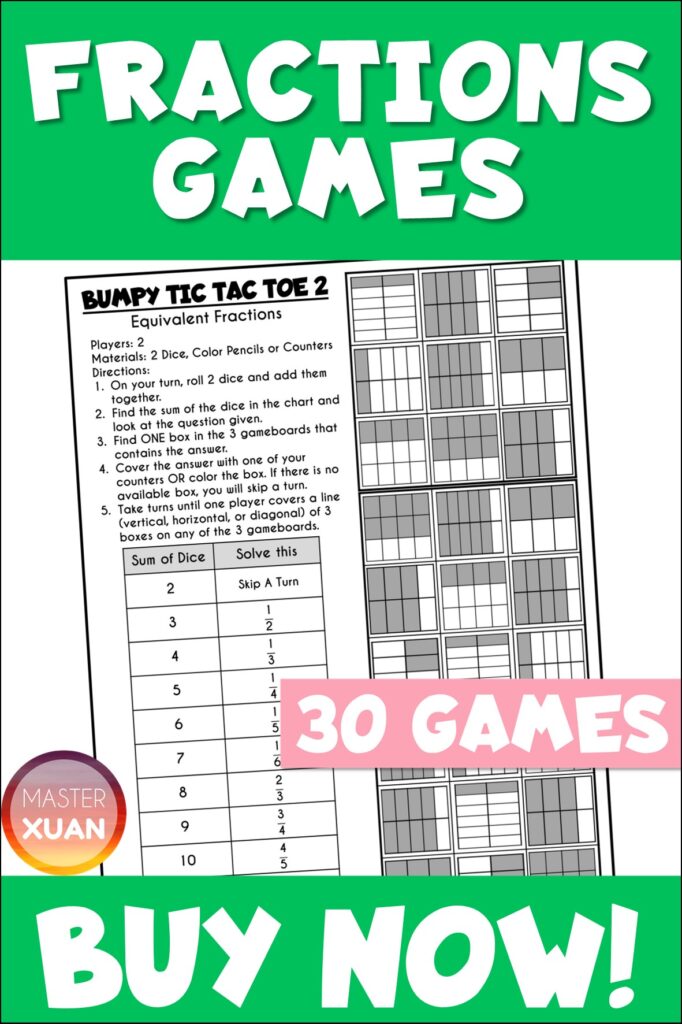
21) Roll & Race
Players: 2 – 4
- Students will take turns rolling the dice.
- The student will answer the first question on the path.
- The first student to reach the last box of the path which is the finish line wins.
With an element of luck, and competition to excite students, this math review activity is a success!
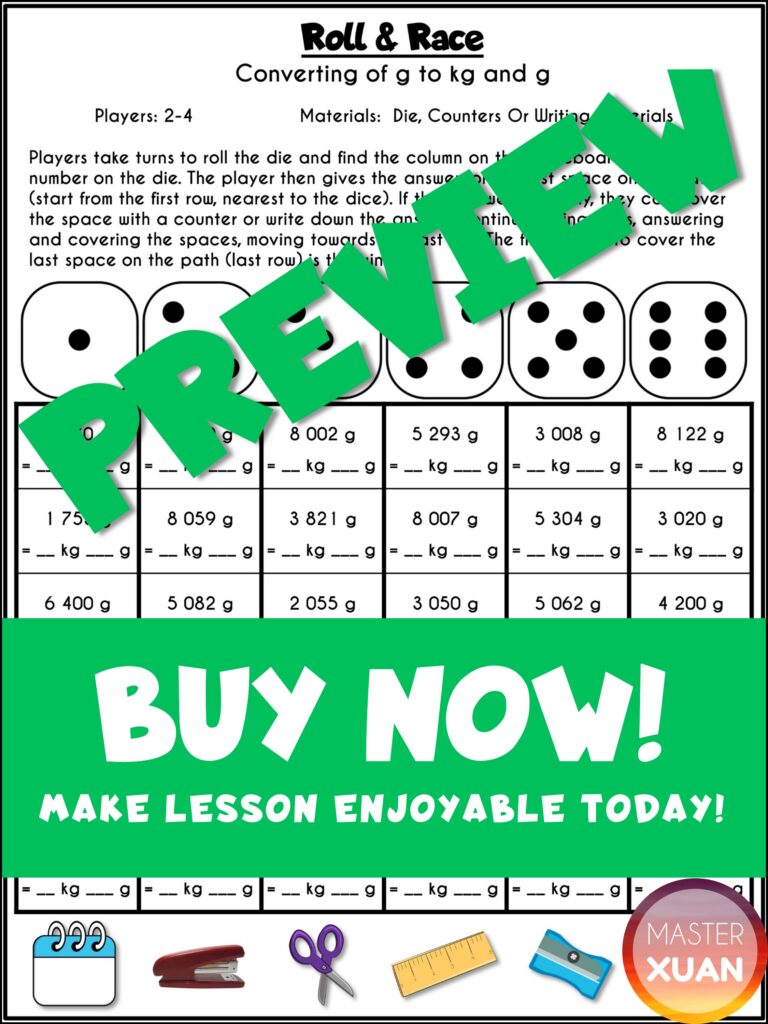
22) Four-In-A-Row
Players: 2
There are 2 types of Four-In-A-Row. One is similar to the gameplay of Connect Four whereby students need to start from the bottom row and layer on top of each other.
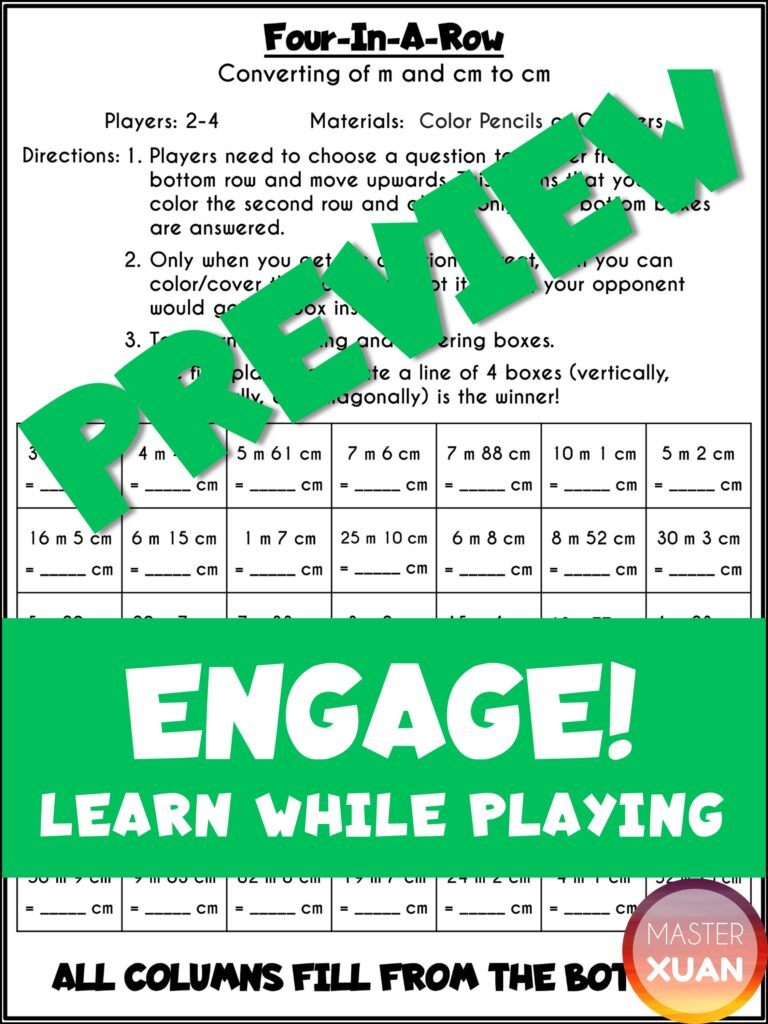
Students take turns placing the counter on the map and answering the corresponding questions.
Students need to make a line of four (vertically, horizontally, or diagonally) to win.
Another type doesn’t have this restriction and students can place their counter anywhere on the grid. The way to win stays the same.
23) Five-In-A-Row
Players: 2
Instead of making a line of four, students need to make a line of five.
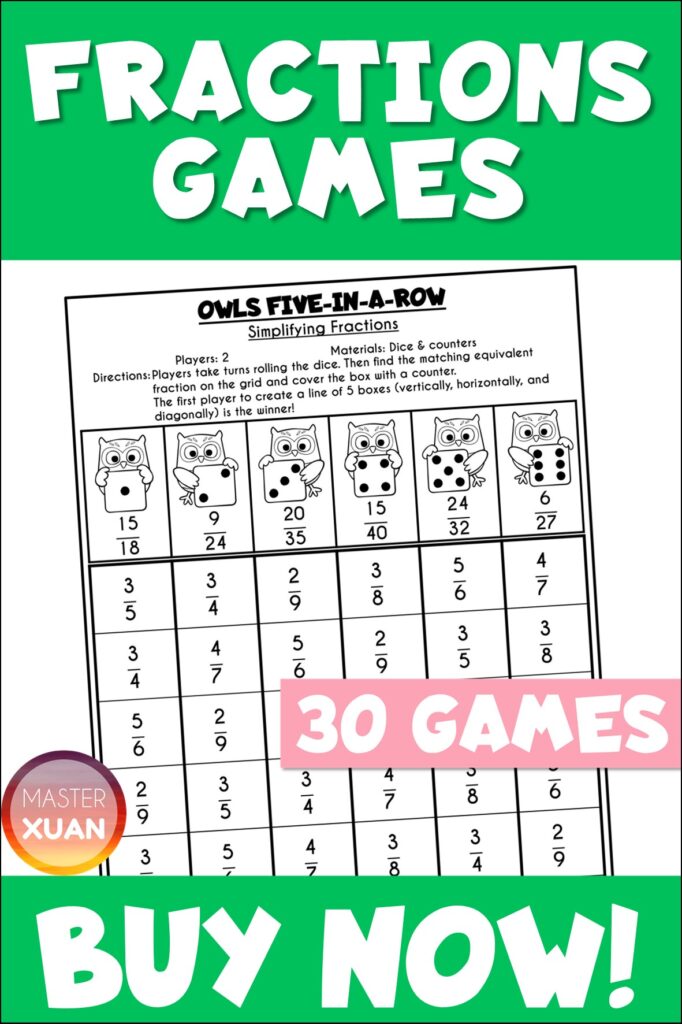
24) Squares Dots Game
Players: 2 – 4
- Students will roll the dice.
- Find the corresponding answer.
- Then find the right answer on the grid and select one side to draw a line and connect the dots.
- The student who draws the last line to form a complete square will get to capture that square.
- At the end of the game, count how many squares each player gets.
- The player who gets the most squares win!
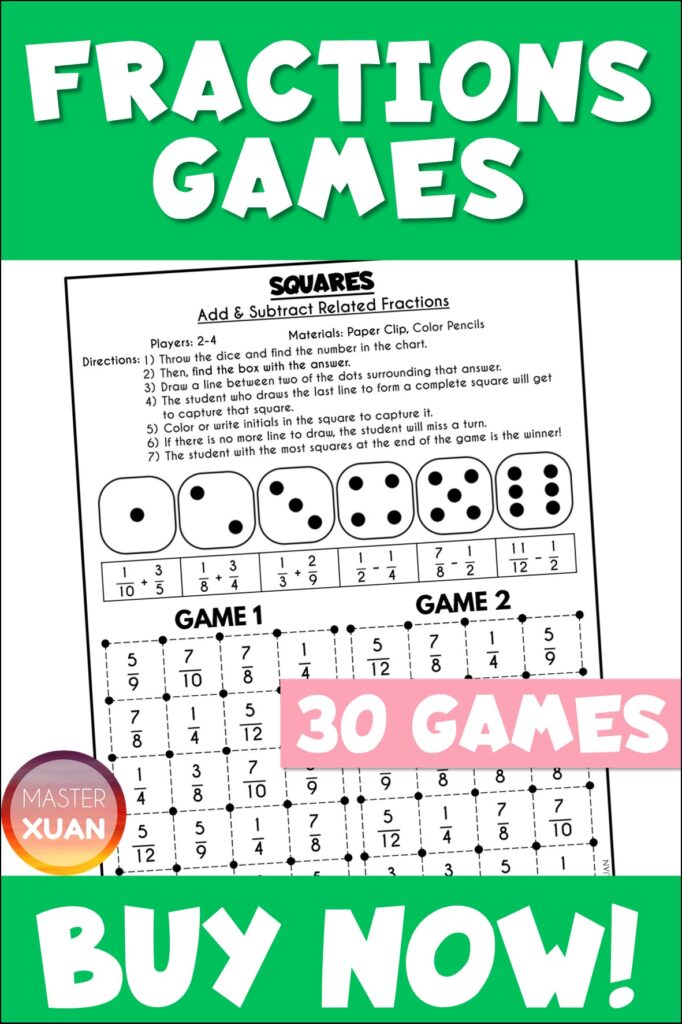
25) Trap It!
Players: 2
- Decide who starts first.
- On your turn, color or cover the 2 hexagons with matching measurements.
- Take turns until one player covers the final hexagon around one of the candy corns.
- The winner is the first player to trap one of the candy corns.
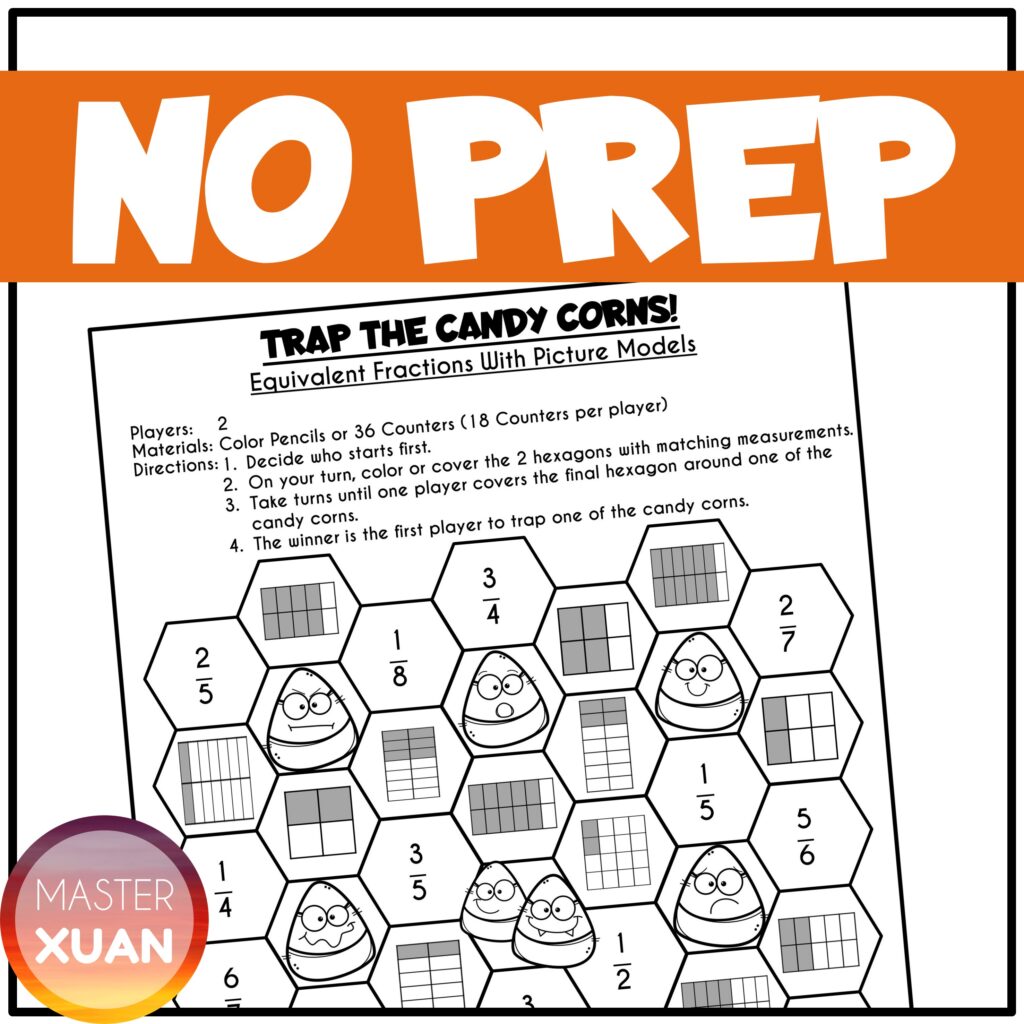
26) Find A Line
Players: 2
- Players take turns covering the fractions to make an equation.
- This means students will cover one square from each set on a turn.
- Once a circle is covered it stays covered.
- The winner is the last person to make an equation.
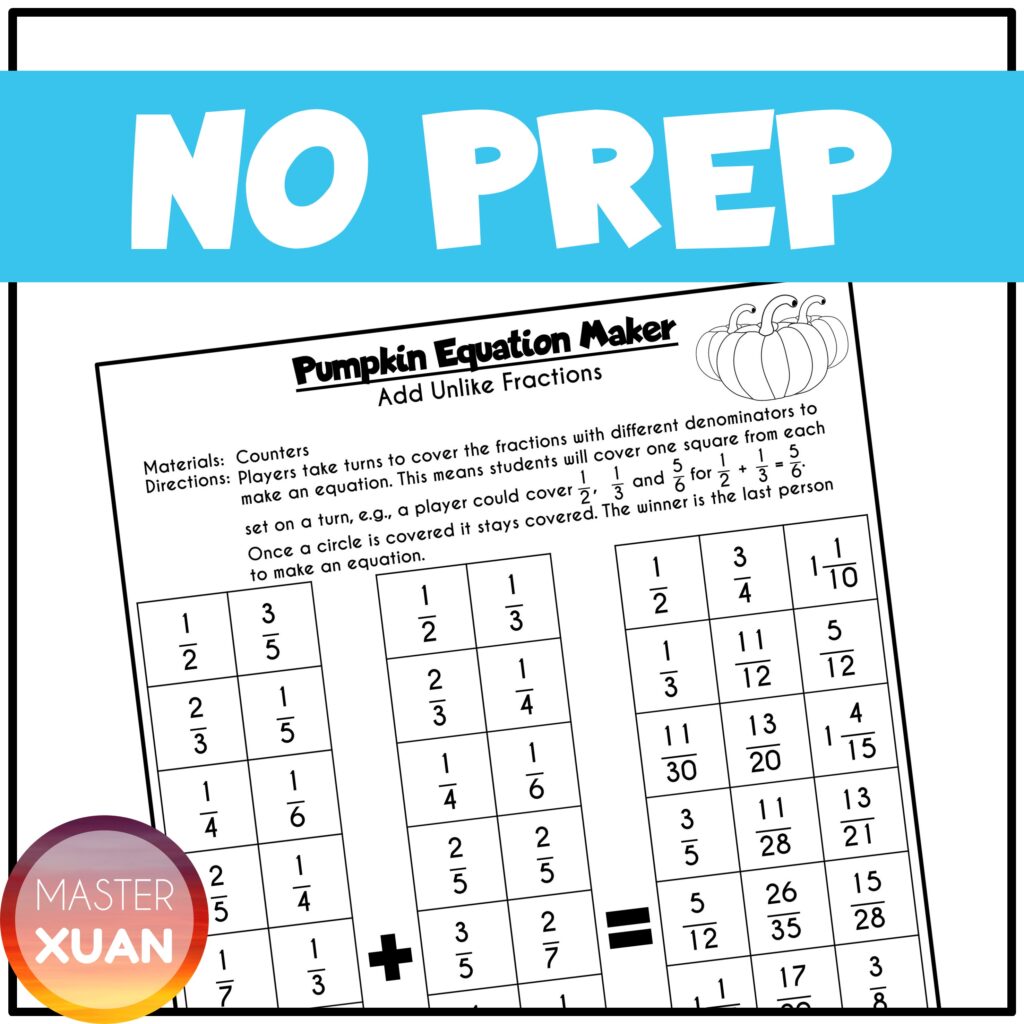
27) Math Search
Players: 1
This work similarly to word search. Students will have to search for the equation in the grid.
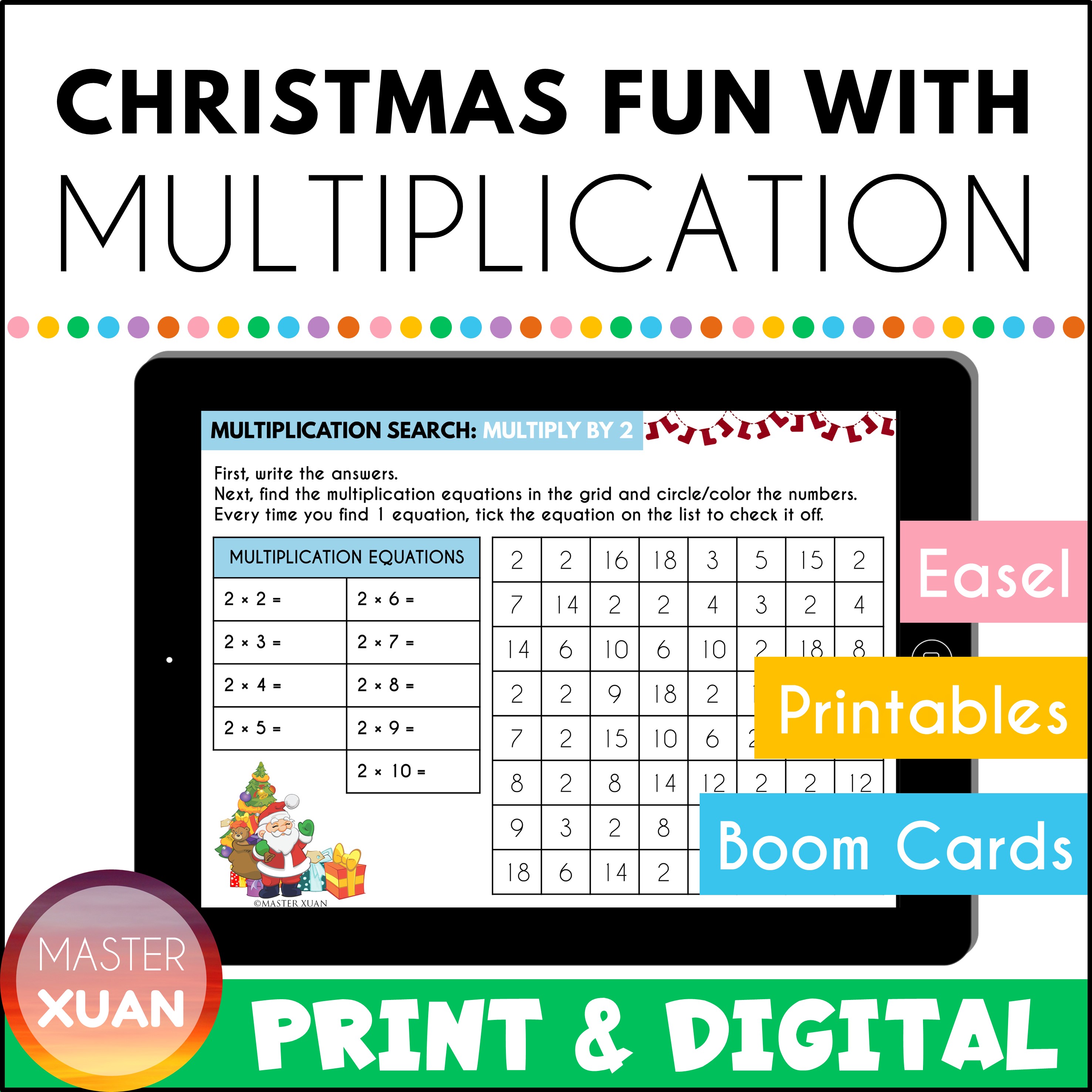
28) Math Crossword Puzzle
Players: 1
Students will need to fill in the numerical answers in the crossword.
29) Printable Math Mazes
Players: 1
Students need to answer the question correctly to know which way to proceed.
Some mazes show the answer on the pathway, while others show it at the top of the next question.
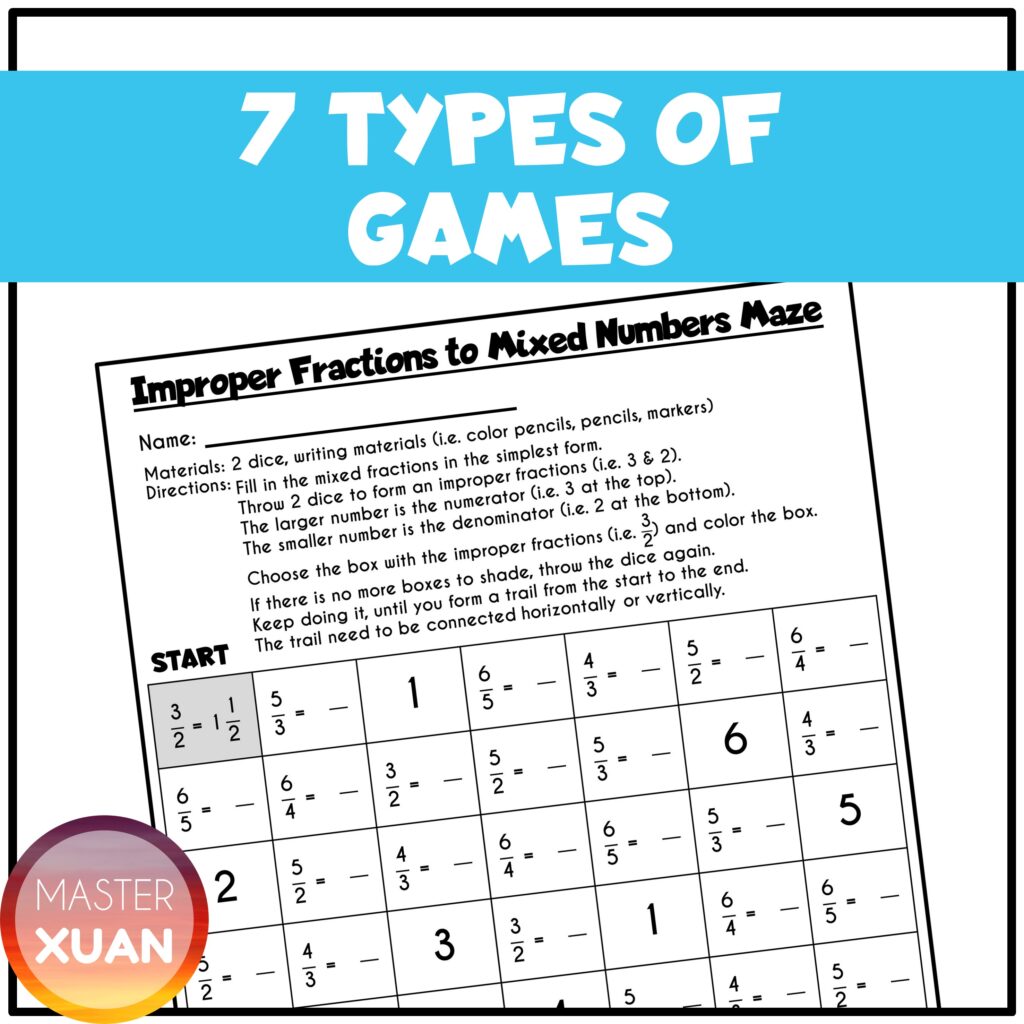
30) Create Their Own Maze
Players: 1
Students can create their own questions and write them in a grid or a maze template.
Students need to think of common mistakes and use them for incorrect answers.
31) Bingo
Players: 2 – whole class
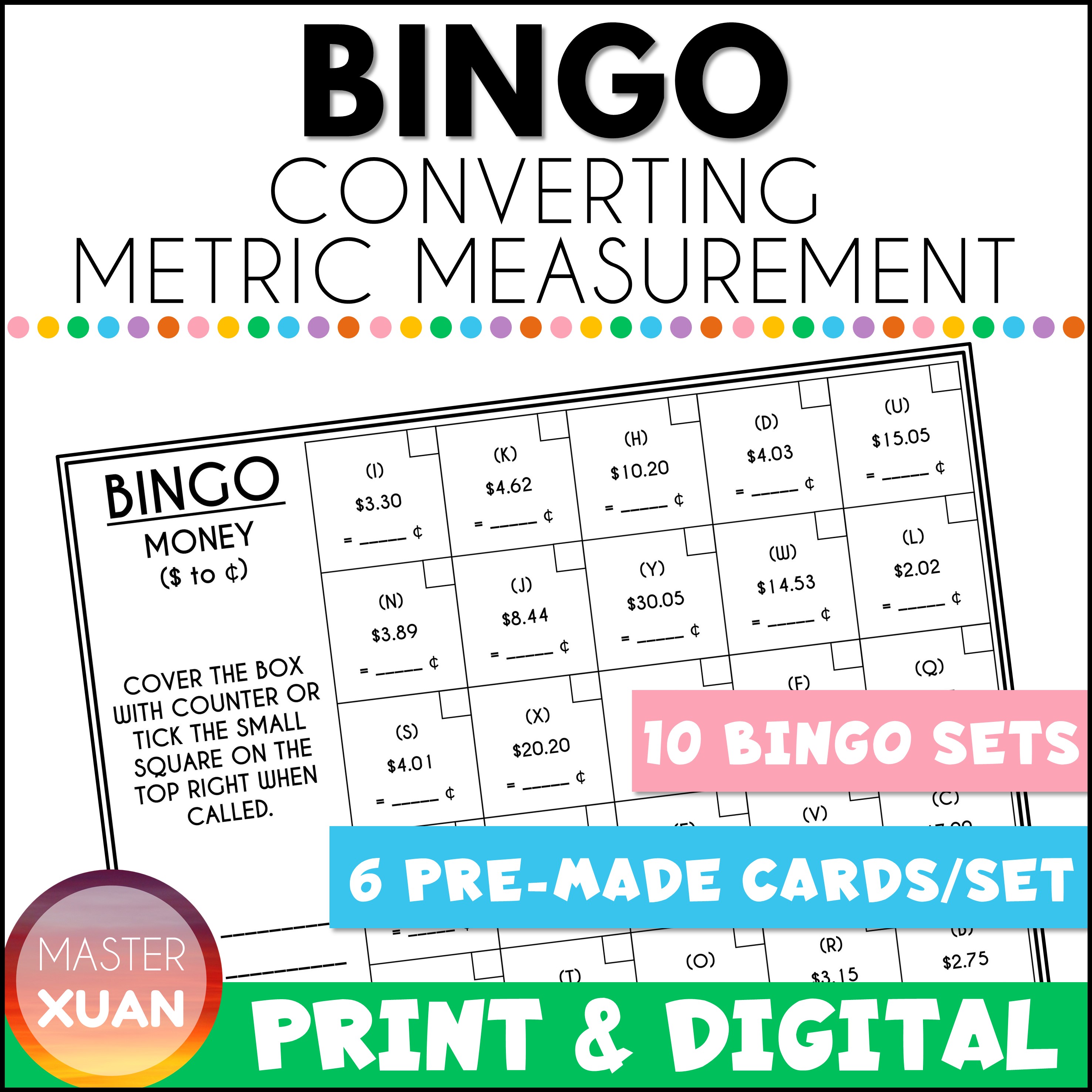
There are 6 pre-made Bingo Cards for each set which makes it perfect if you use it for math centers. You can also use the cut-and-paste gameboard if you plan to play with the whole math class. With 2 different types of game boards, you can use this resource in 6 different ways.
A spinner is also provided which makes it the perfect way to add in the element of luck and can be used for partner activity.
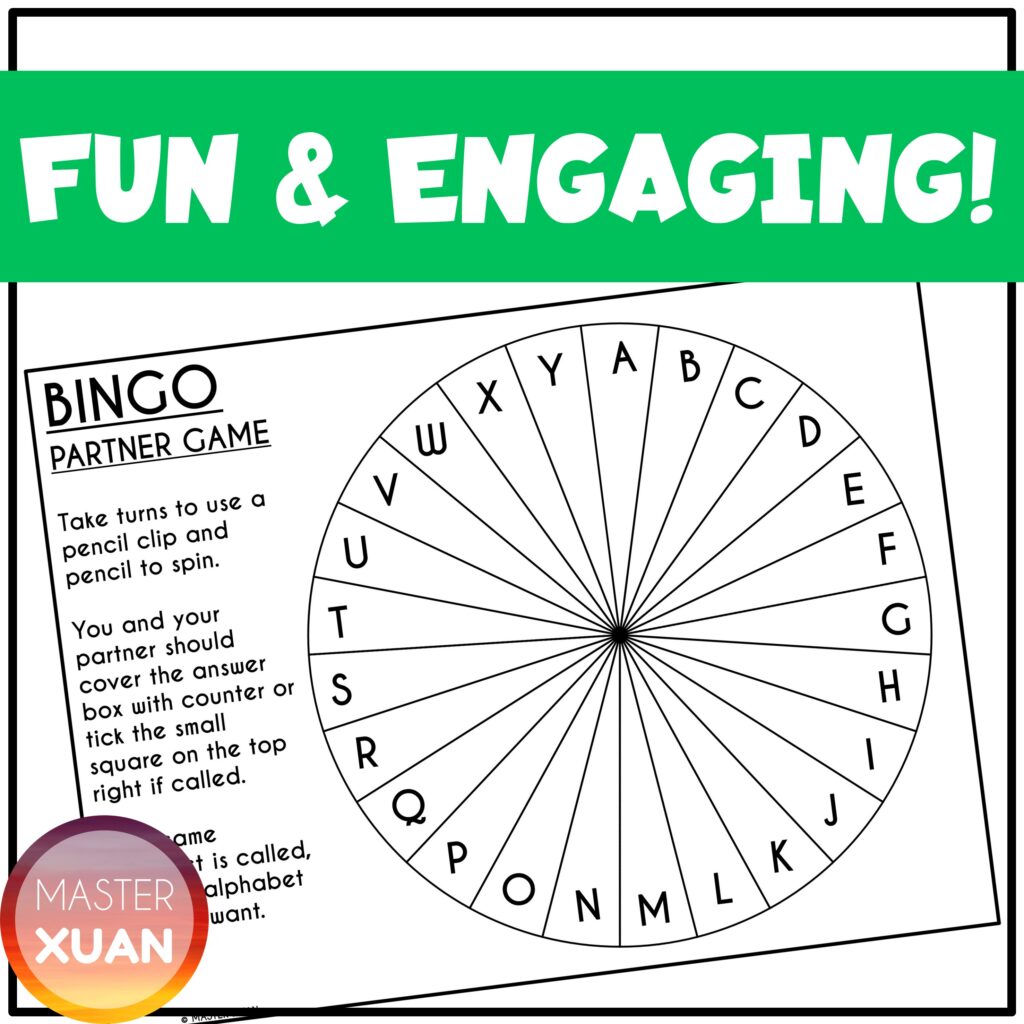
- Students need to answer all the questions on the bingo card.
- You can call out the answer or the alphabet (depending on if you want to check first or later), and students can cross off that box.
- Students need to make 5 connected lines (vertically, horizontally, or diagonally) and be the first to shout BINGO to win.
- If you want it to be a quick game, make it 1 connected line instead of 5.
Card Games
Players: 2 – 6
You can play many games using a deck of cards.
For instance:
- Blackjack: Students need to add up the numbers on the cards to get 21 (or be the nearest) to win.
- Bigger or Smaller: Pair up students and split the pile into 2. Each student gets a pile and without seeing it, starts placing cards face up on the game pile. Students who get the bigger or smaller (up to you) will get both cards. The player with the most cards at the end will win.
- Multiplication: Pair up students and split the pile into 2. Each student gets a pile and without seeing it, starts placing cards face up on the game pile. Students need to multiply the 2 cards. The first player to say the correct answer wins.
32) Memory Game
Players: 2 – 4
Create your own deck of cards based on the math skills you want to review. You will need to have a pair that match. For instance, writing equivalent fractions (i.e. 1/4 on one card and 2/8 on another).
Write on thicker paper or cardstock paper to prevent the numbers from peeking through when placing face down.
- Arrange the cards facing down on the table. Then begin the matching game.
- Students need to take turns flipping cards and remembering their position.
- Only when they find a matching pair then they get to keep it.
- Usually, they will continue flipping if they found one matching pair.
- The player who gets the most cards will win.
33) Donkey Card Game (Math Vocabulary Version)
Players: 2 – 6
This is a great activity to review math vocabulary, formulae, and equations.
Similarly, you will need to prepare a matching pair of cards. For instance, on one card write “-“, and on the matching card write “subtraction”.
You can choose to write on a piece of paper but if you plan to reuse it for other games, writing it on thicker paper or cardstock and laminating it may last longer.
For each skill set, you will need to prepare one stack of cards. You can also choose the number of stacks of cards.
- To start the game, remove 1 card from the pile.
- The matching card will be the “Donkey” or the odd one out.
- Distribute the pile of cards equally to every player.
- Students will start by throwing away matching pairs that they have.
- Decide who will start first and in which direction (clockwise or anticlockwise) to play.
- The Player will pick a card from the next player and throw out any matching pairs. For instance, if there are 4 players, (North, East, South, West), North will take a card from East, and East will take a card from South.
- The player holding the “Donkey” or the odd one out will lose the game.
34) Math Go Fish + Taboo
Players: 2 – 5
Prepare 52 cards of 4 matching cards. For lower grades and easier gameplay, make it exactly the same.
But for higher grade levels or high achievers, make it similar but different.
For instance, here are 4 matching cards “100 + 50 = ?” and “150”, “300 divide by 2=?”, “200 – 50 = ?”.
- Shuffle the cards.
- Each player will receive 5 cards or 7 cards (2 players).
- The remaining cards are spread out in a disorderly pile referred to as the “ocean”.
- Players can ask any player but cannot ask for the numbers or answers on the card that they want to match.
- For instance, if Player 1 wants to match the card “100 + 50 =?”, he will need to ask Player 2 in a roundabout way “Do you have the number greater than 149 but lesser than 151?”
- Player 2 needs to give Player 1 the card that was asked for. If Player 2 doesn’t have the card, he needs to say “go fish”.
- Player 1 will then draw a card from the draw pile or “ocean”.
- Players need to show face-up whenever they receive 4 cards of the same value.
- The player with the most set of 4 cards wins.
Hands-On Activities
35) Paper Weaving
Players: 1
This activity is suitable for math facts, simple calculations, and short equations if you wish to show the question on the paper weaving itself.
Otherwise, indicate the question number on the grid and the answer on the strips of paper to make it works.
This actually works best with the template as if you were to do it yourself you will realize that it will result in untidy ends. That’s because some spaces are actually used up during the weaving! So after experimenting, I came out with this template.
Here’s a freebie for you to try out!
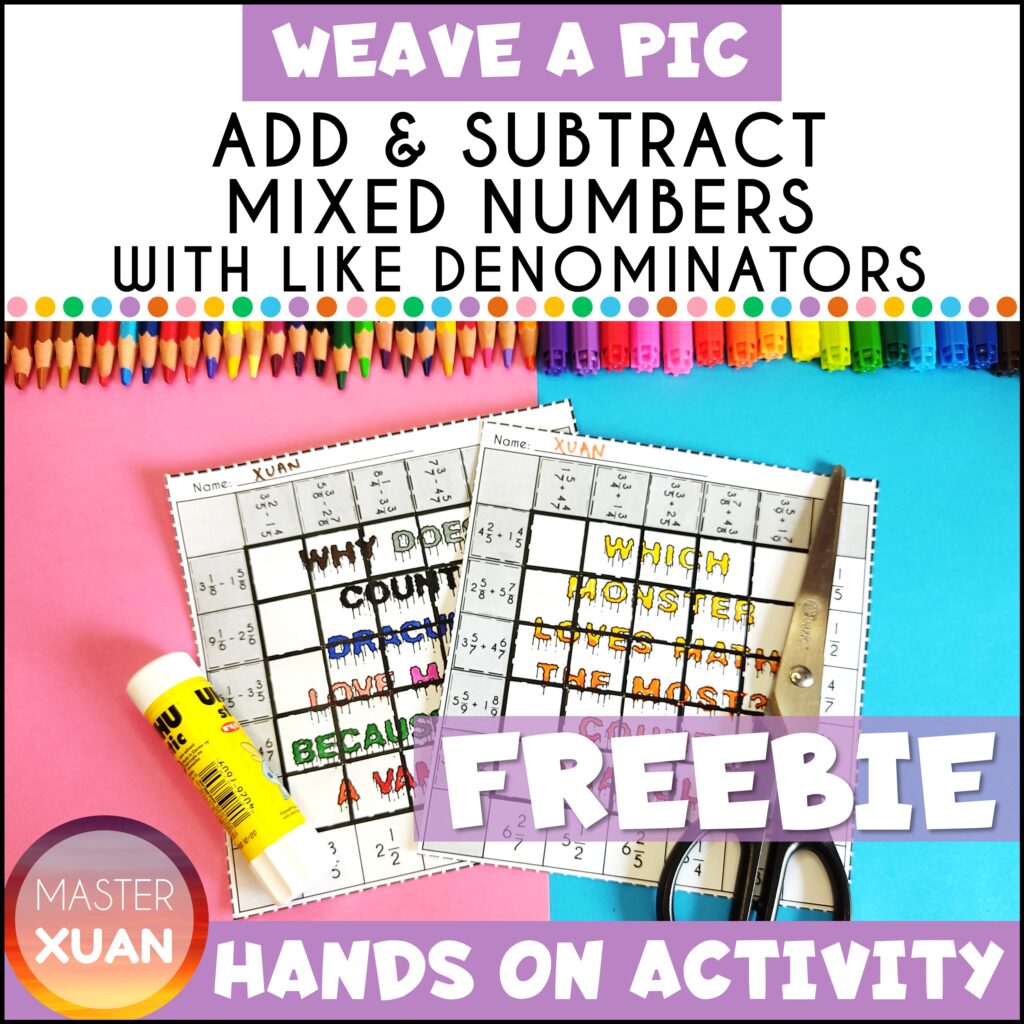
- Print the templates for the students.
- Students will then cut out the pieces along the dotted line.
- Align the correct answers on the grid.
- Then glue the first box on the grid to make it stays in place.
- Then start weaving!
2 Dinosaur Rounding Decimals Paper Weave Freebies!
36) Dodecahedron Craft
Players: 1
- This 3D paper craft looks amazing and will surely capture your students’ attention.
- This works best with older students but can also be completed by 9 years old students (with some help).
- Simply download the template, print it, and let your students complete the practice problems.
- Then it’s time to decorate it or make it pop using a different color marker.
- Next, cut it out and stick the flaps together to form a big ball!
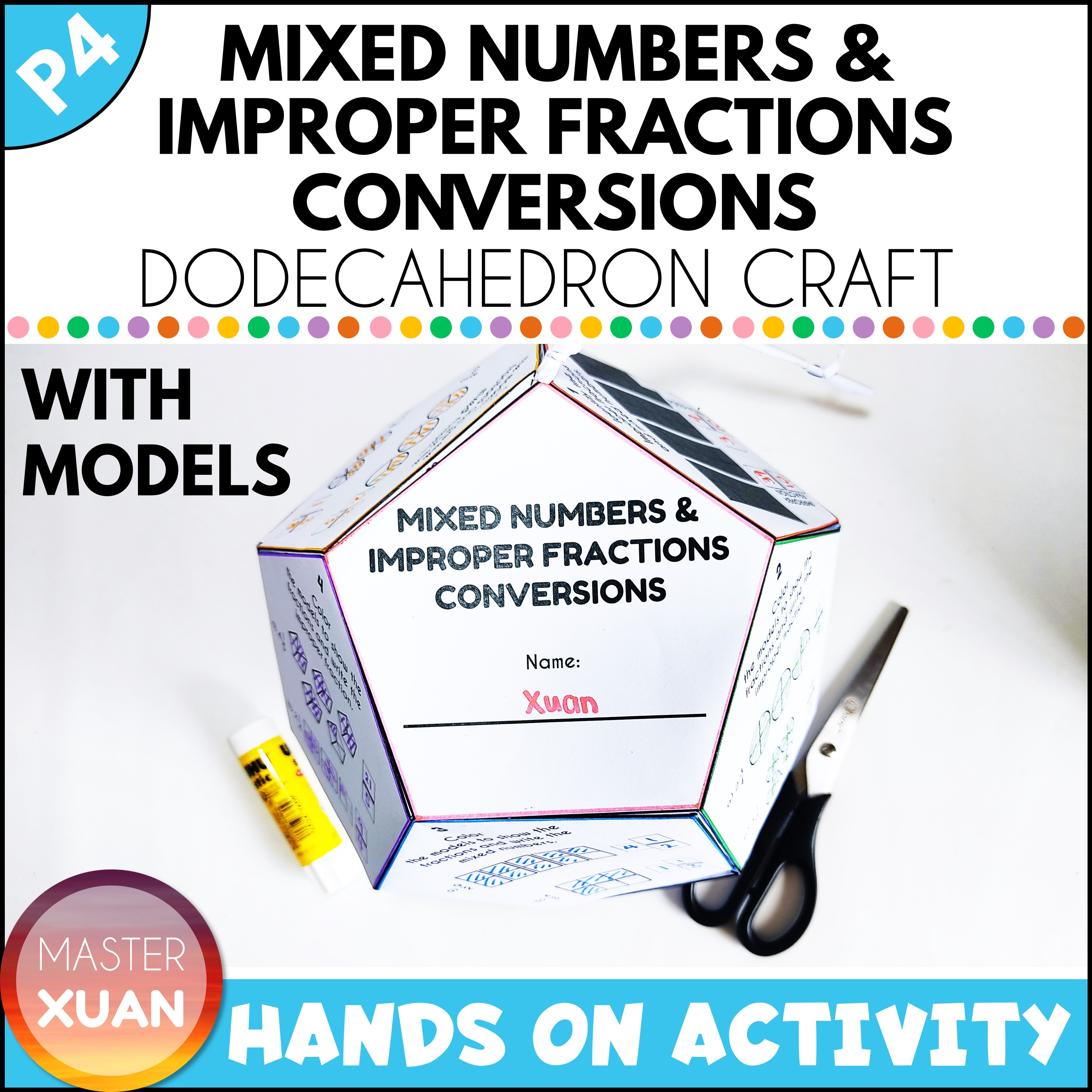
37) Interactive Storybook
Players: 1
There are a variety of questions and students can enjoy creating their own book as they practice their math skills.
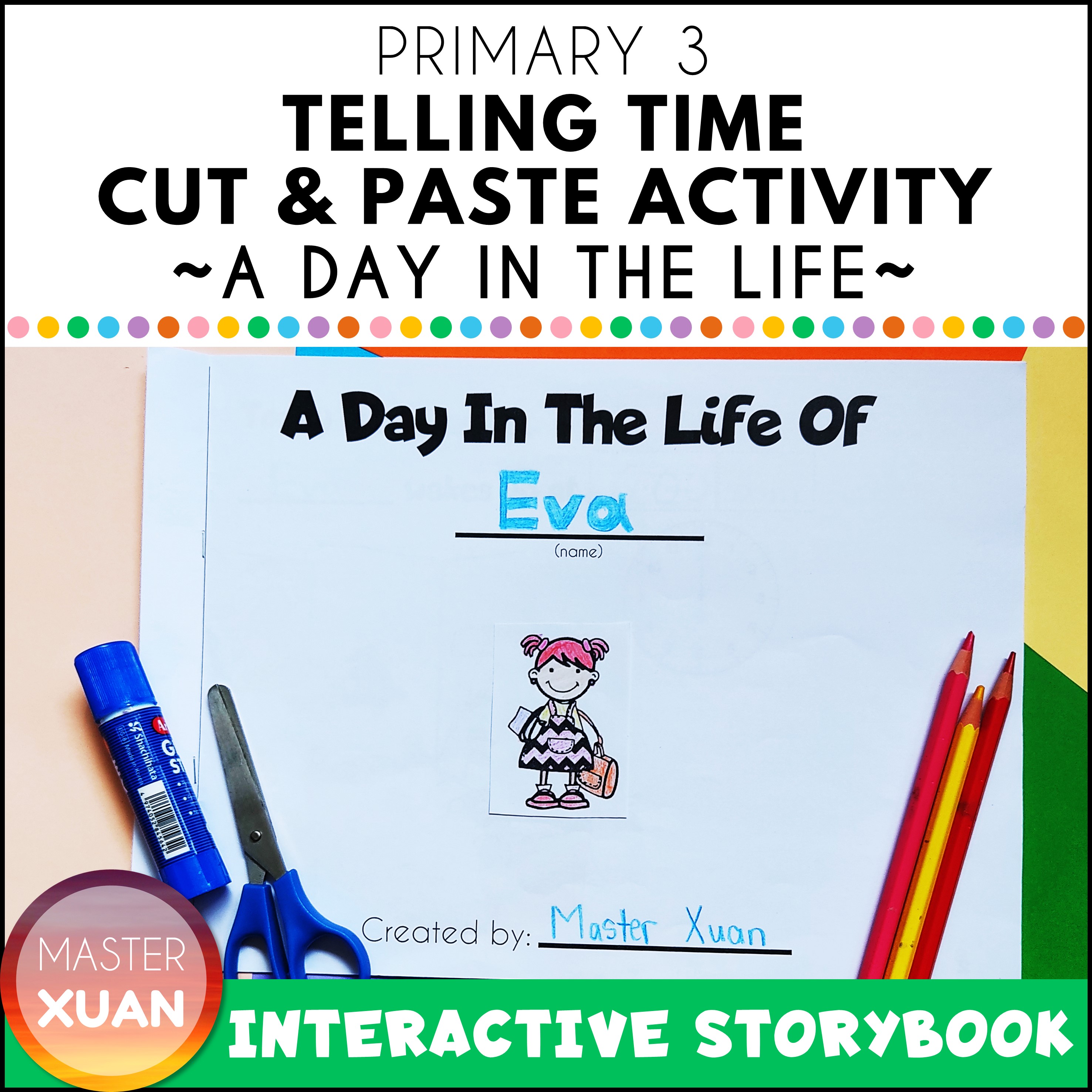
38) 3d Foldable Pop-Up Book Craft
Players: 1
Students can review what they know about the properties of 4-sided figures or quadrilaterals with this activity.
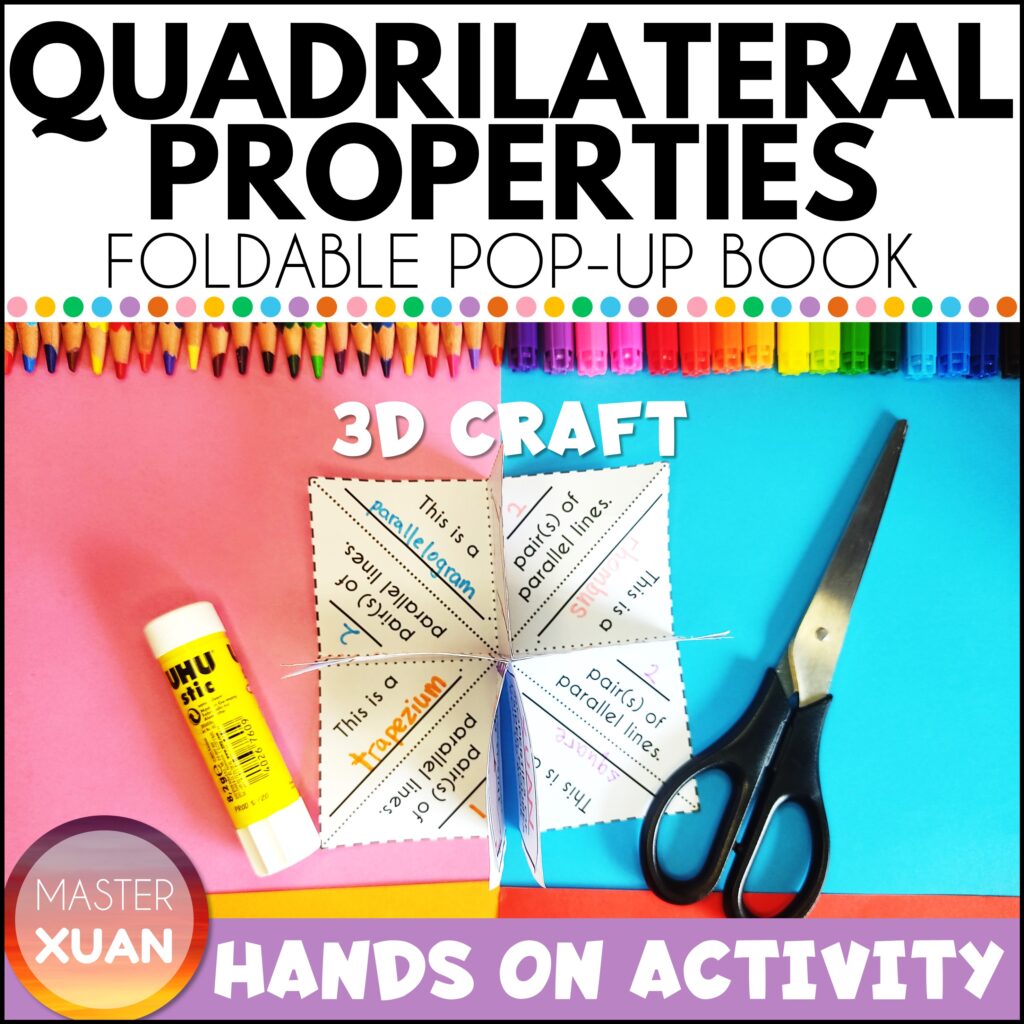
39) Surprise Folding Paper
Players: 1
This is the perfect resource for the start of the new school year as it incorporates All About You, Fractions review, and Craft.
There is a fraction math worksheet (where we also get to know more about the students) that students need to fill up.
Then find the answers and cut them out to paste on the puppet’s mouth. That’s the fun part.
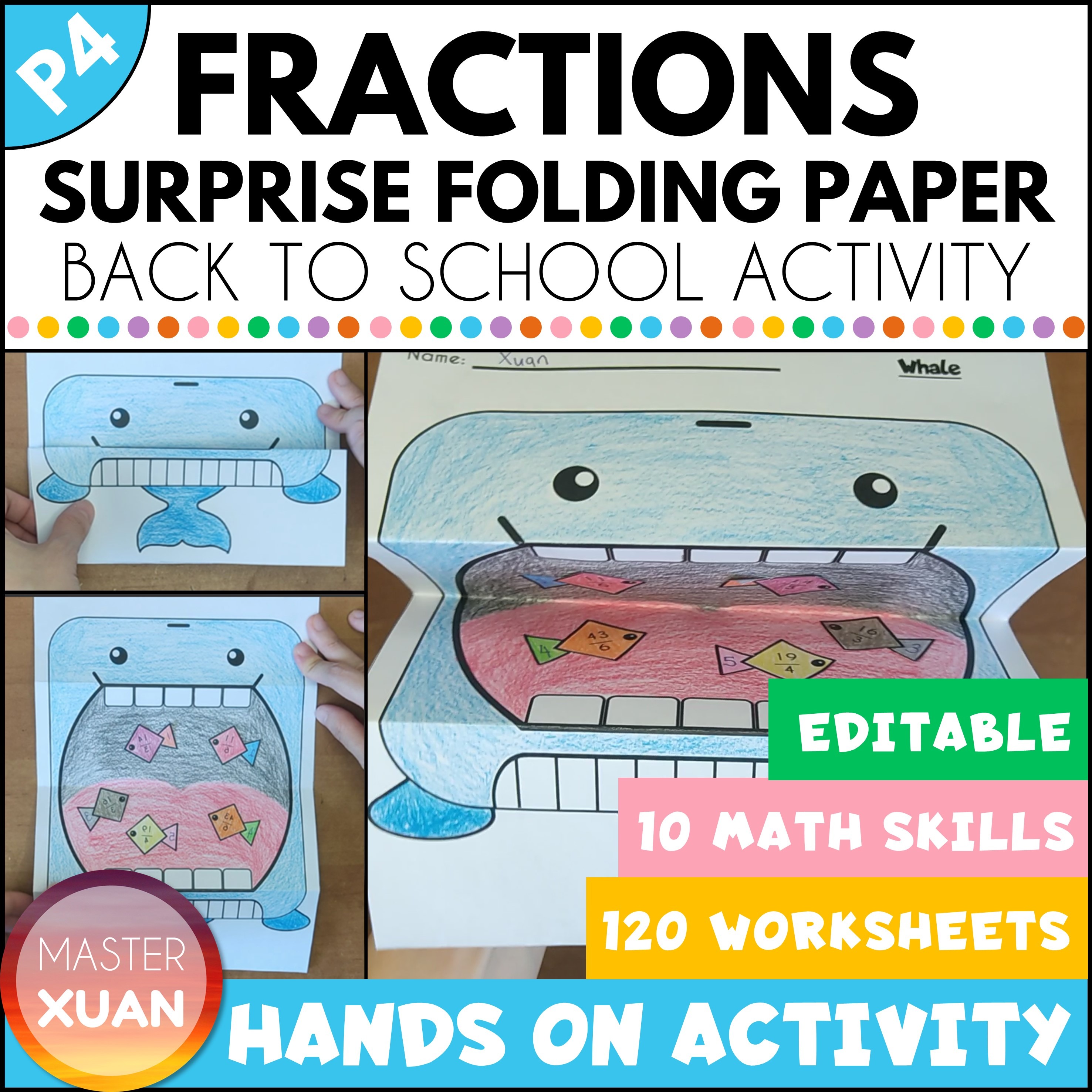
Here’s a freebie for you!
40) Area and Perimeter Cut & Paste Activity
Players: 1
Students get to review the area and perimeter by creating their own monsters. This is one of the most popular math review activities.
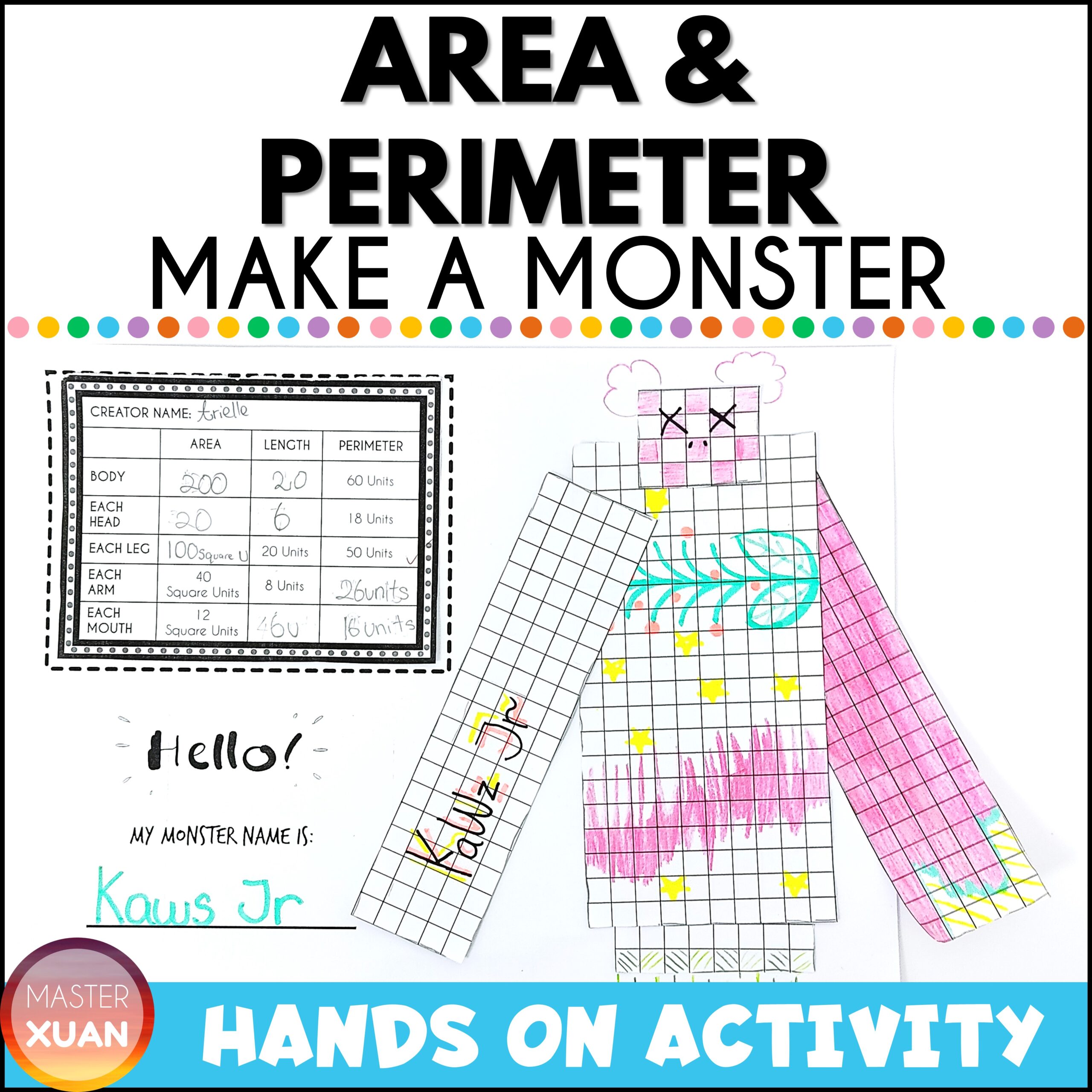
41) Bulletin Board Poster
Players: 1
Sometimes it helps when students know that we are going to showcase their work. They will be more focused when we revise the important math skills as they want to showcase the perfect piece they created.
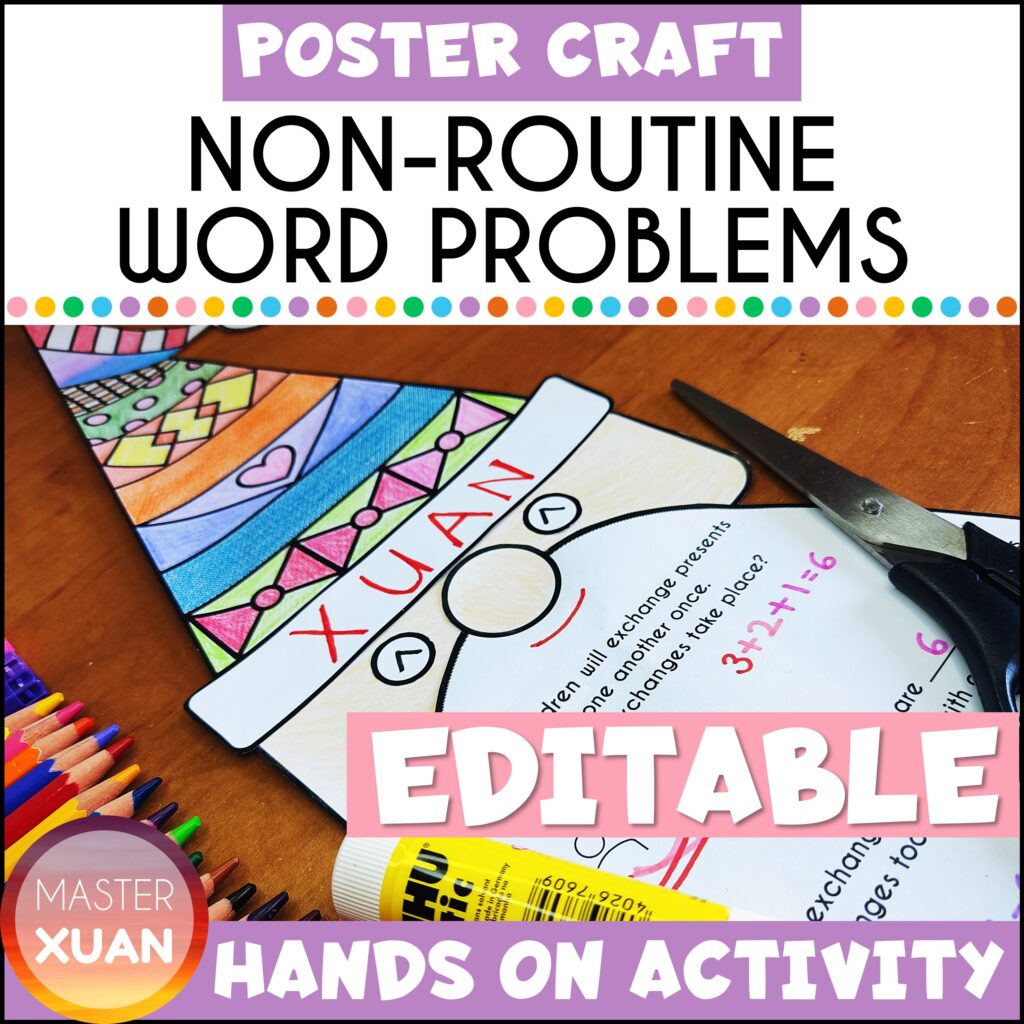
42) Jigsaw puzzles
Players: 1
Review multiplication with these jigsaw puzzles! There are 6 robots for you to choose!
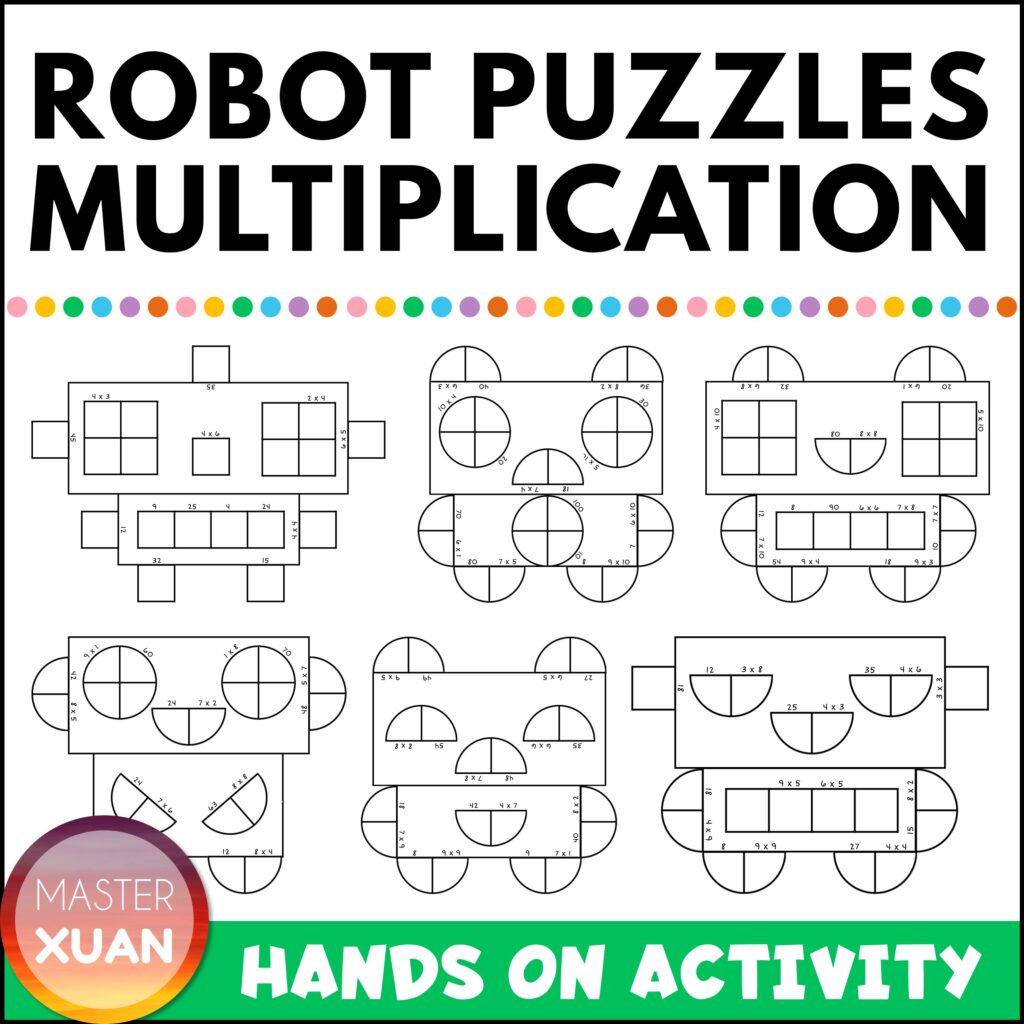
Other Math Review Activities & Games
43) Math Lottery
Players: 2 – whole class
- Ask students to complete any set of task cards or questions.
- Every time they finish 1 question and check with you, they can choose a number on the 100 grid (you can choose how many numbered grids to use).
- I prefer to do this on the computer, replacing the number with the student’s initial or name.
- You can flash it on the screen.
- Alternatively, if you are a paper-and-pen type, you can use sticky notes or just write on the whiteboard.
- Then after all the questions are completed, or when you reach the time limit, it’s time to select the lucky number.
- Use a free random number generator available online to generate the lucky number.
- The winner is the player who got the lucky number.
44) Mystery Box
Players: 2 – whole class
- This is another way to increase student engagement when they do their review via worksheets.
- Students get to pick a crumbled paper with the points from the Mystery Box every time they answered 1 question and get it correct.
- Once all the paper is taken out of the Mystery Box, tally the point values each student or team gets.
45a) Math Scavenger Hunt
Players: 2 – whole class
This is a great game for adding movement to class and is a great whole-group activity.
Students have to search the classroom for the task cards with the questions on them.
Find those self-checking scavenger hunts to save you marking time! These math review activities are a hit in class.
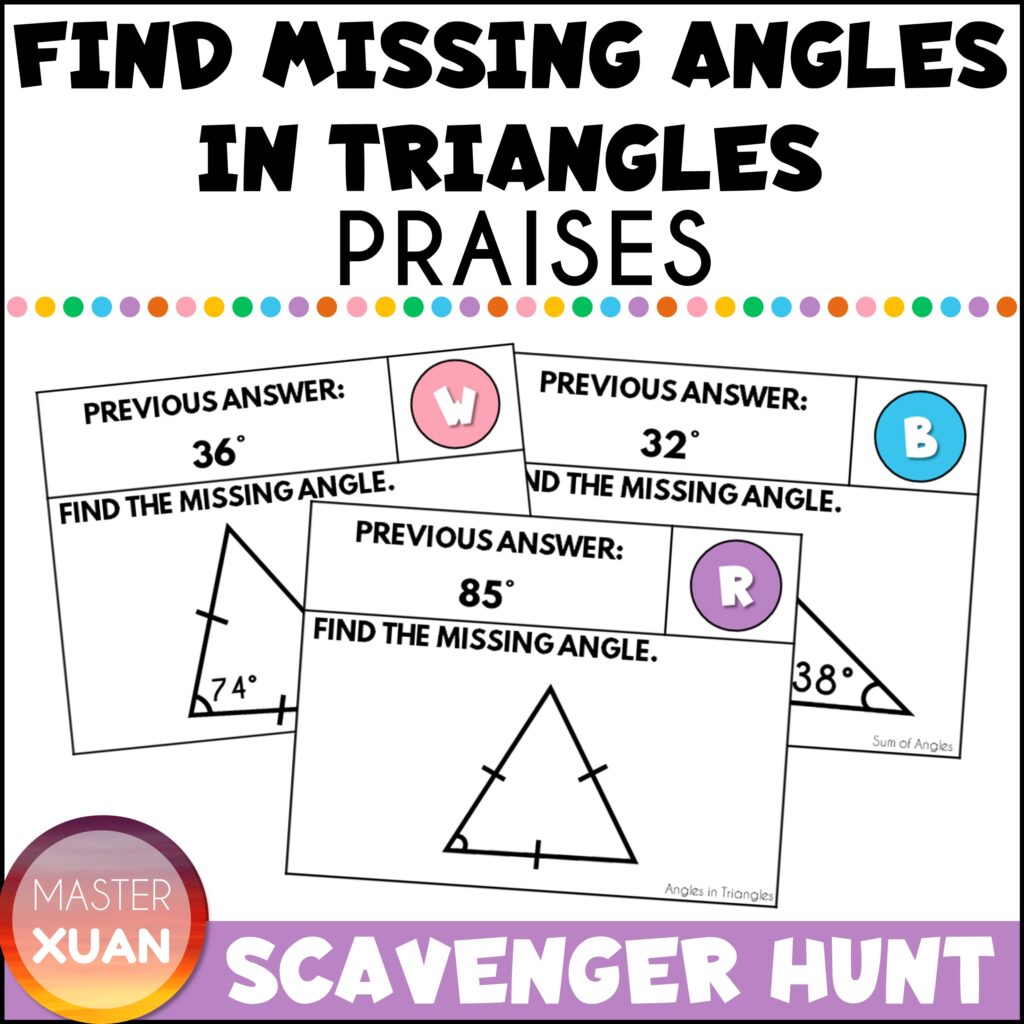
45b) Scavenger Hunt + Mystery
Players: 2 – whole class
A great way to make it more challenging or interesting is to add a mystery to solve. Students will receive clues when they find the task cards and answered the question correctly.
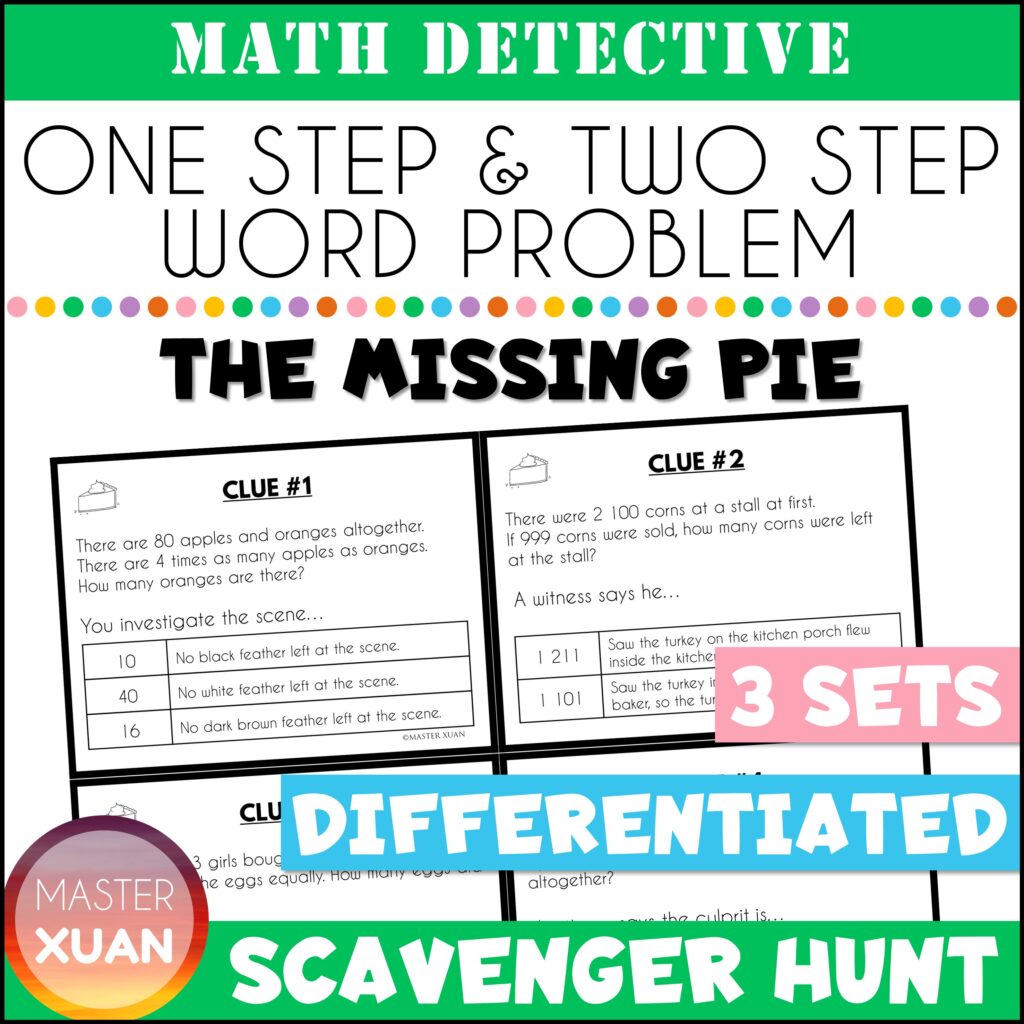
46) Scoot
Players: 2 – whole class
Students will answer the question placed on the table. Give them a set amount of time to complete then ring the bell or signal students to move on to the next table with another set of questions.
You can review a different skill on each table.
47) Swat-It!
Players: 2 – 4
- This is a fun math play. Place the possible answers on the ground or the table.
- Students will use the swat to slap on the correct answer after you ask a question.
- The first to swat it wins!
- This works well for calculations such as math facts.
48) Trashketball
Players: 2 – whole class
- Students get to throw a crumbled paper in the rubbish bin when they got a question correct.
- You can draw or indicate lines of different distances away from the rubbish bin.
- The furthest line let them win 3 points while the nearest one wins 1 point only.
49) Demolish Building Tower
Players: 2 – 4
- Using uno stacko or Jenga or any building blocks.
- After students answered 1 question correctly, they can take one building block off.
- The student who has the most building block before the building came down tumbling down wins.
- If there is a tie, the first to use all the building block and stack it up vertically wins.
50) Operations War
Players: 2
- You can play the addition or subtraction war.
- Take turns throwing 2 dice.
- Add them together.
- The player who first reaches 50 or 100 wins.
- Alternatively, students will subtract the sum of the dice from 50 or 100. The first to reach 0 wins.
51) Boggle Of Operations
Players: 2 – whole class
- I use this to review the order of operations without exponents.
- Place random numbers on a 4 x 4 grid.
- Students need to form as many equations as they can with connecting numbers (vertically, horizontally, diagonally).
52) Pictionary Math
Players: 2 – 3
- I use this to review fractions.
- 1 student is required to guess the question and answer it. Bring the student to a corner or have his/her back turned.
- The other team members will take turns drawing the question out.
- Each player only has 10 seconds to draw something on the board. But they cannot draw out the answer or write out any numbers.
- They will complete the picture together.
- For example, 1/4 + 1/2 = ?
- Player 1 may only have the time to draw out 1/4 of the pizza and Player 2 will draw the rest of it.
- The time limit really gives them the rush and gets them all excited!
53) Mystery Images
Players: 2 – whole class
After students finish doing 1 question, they can choose a sticky note with an image (i.e emoji) on it.
At the end of the session, you can then reveal what is the point that each image is worth.
Students will add up the points.
The player with the highest number of points wins.
To make it more interesting, they can exchange 3-5 of the same images for a hint (depending on how many questions you plan for them to do). They can select 2 different images and ask you in secret which is worth a higher point.
Final Thoughts
One of the best ways to revise math skills many times without students getting sick and tired of it is to do math review activities. Students will be more engaged and focused when they enjoy math lessons.
Plus, only after they master the old skills than it makes teaching new skills easier.
Here are some pins that you can save to bookmark this post. Save them to your Pinterest Board now! ↓
